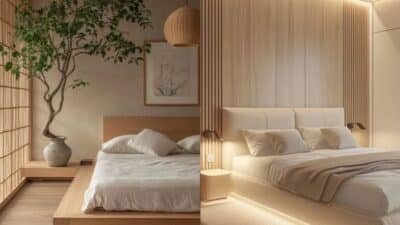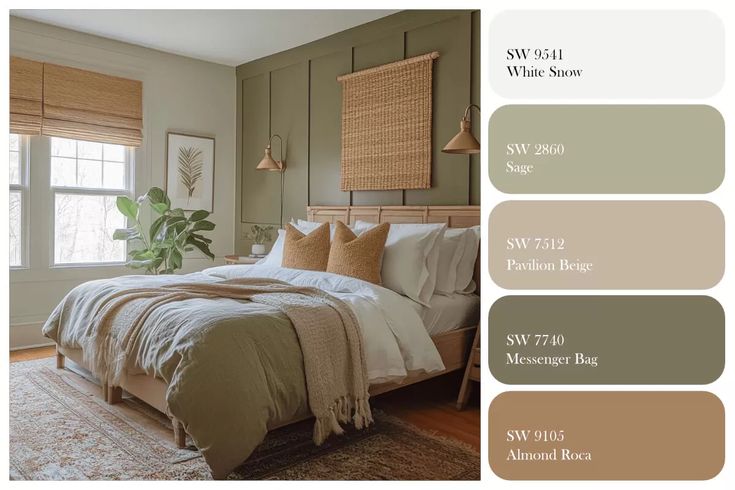
Choosing the right Pantone color scheme can change the whole look and feel of a bedroom. Pantone offers a wide range of colors that bring harmony, mood, and style to any space. Using these colors helps create a balanced and inviting room that reflects personal taste.
Different Pantone shades work well depending on the bedroom’s style and lighting. Some colors are calming and perfect for a restful space, while others add energy or focus. Knowing how to mix and match these colors can create something unique and pleasing to the eye.
Many designers use Pantone’s Color of the Year or popular palettes to find fresh ideas. Accent walls and small touches can also highlight these colors without overwhelming the room. These approaches make the bedroom both comfortable and stylish.
Key Takeways
- Pantone colors shape the mood and style of a bedroom.
- Lighting affects how Pantone colors appear in a space.
- Small accents can enhance the overall color scheme effectively.
Understanding Pantone Colors for Bedrooms
Pantone colors provide a clear system for identifying and using specific shades. This helps people pick exact colors for decorating bedrooms and ensures they get the look they want. It also affects how designers create color trends and schemes.
What Are Pantone Colors?
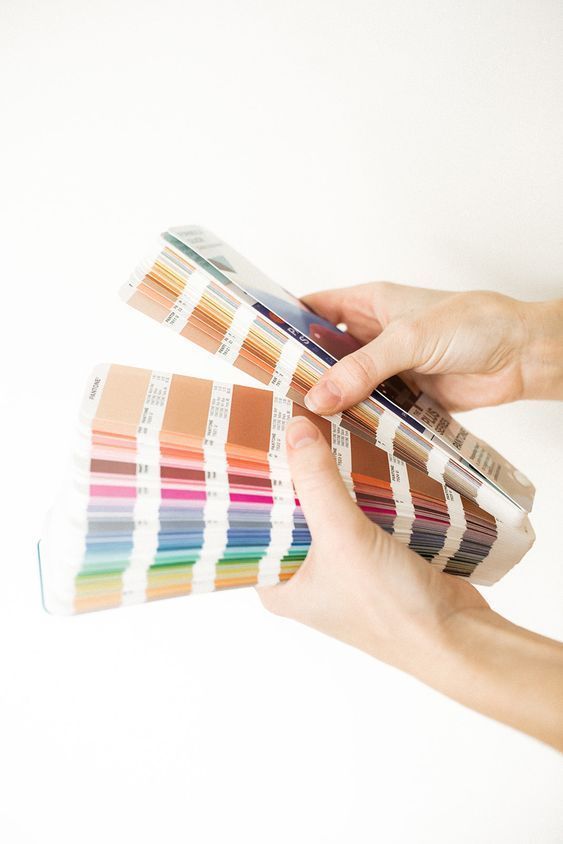
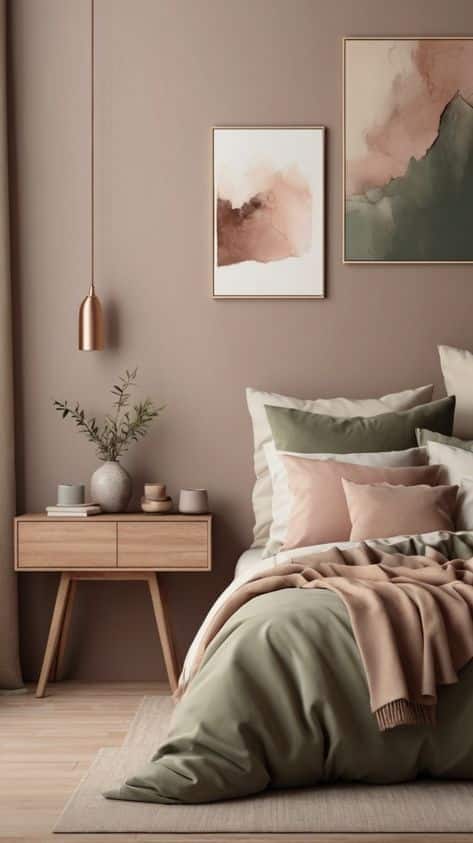
Pantone colors are a standardized set of colors used worldwide. Each color has its own unique code, which makes it easy to communicate and reproduce that exact shade anywhere.
The Pantone Matching System (PMS) started for printing but now helps in many areas, including interior design. This means a bedroom painted with a Pantone color will look the same no matter the brand of paint.
They cover thousands of shades, including reds, blues, greens, and neutrals used commonly in bedrooms. People can pick a shade knowing it will be consistent and reliable.
Pantone’s Impact on Interior Design
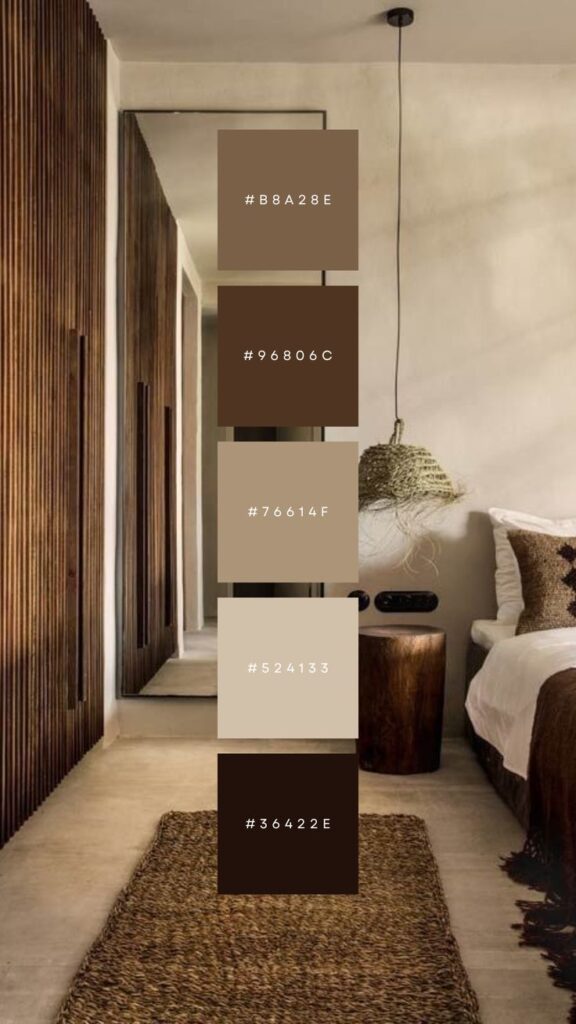
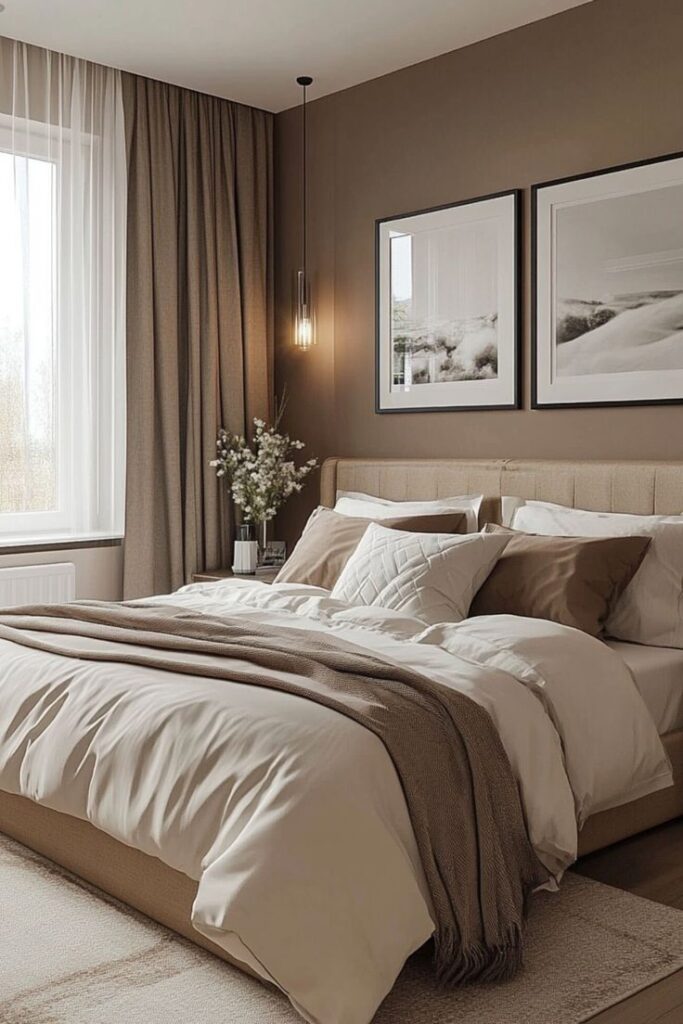
Pantone influences how interior designers choose color palettes. They release a “Color of the Year,” which often shapes trends in bedroom colors the following seasons.
Designers use Pantone colors to create balanced schemes. They mix and match from Pantone palettes to set moods like calm, energetic, or cozy in bedrooms.
Because Pantone colors are precise, they help avoid guesswork. This makes decorating smoother and helps homeowners get professional-looking results.
Benefits of Using Pantone Color Schemes
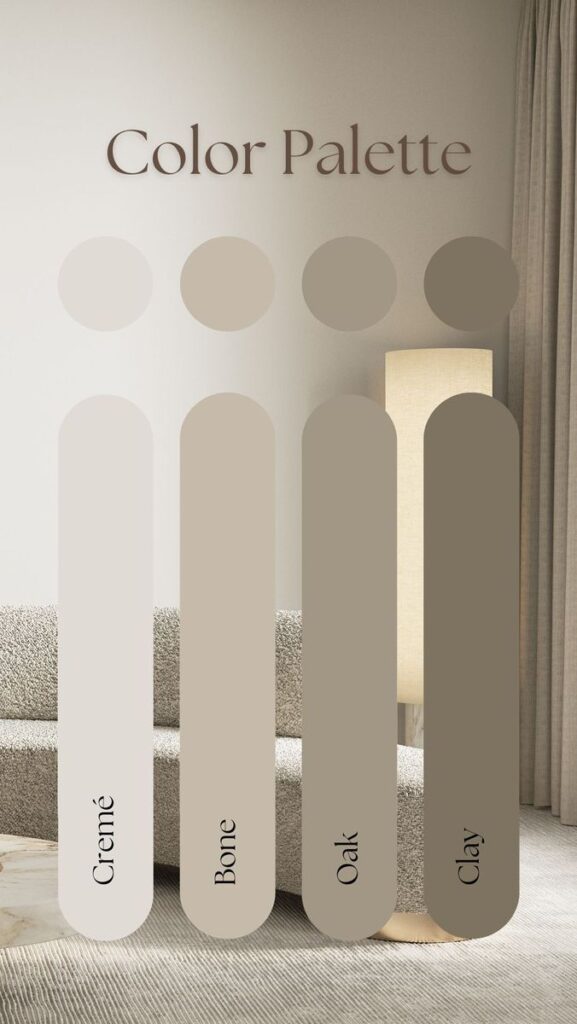
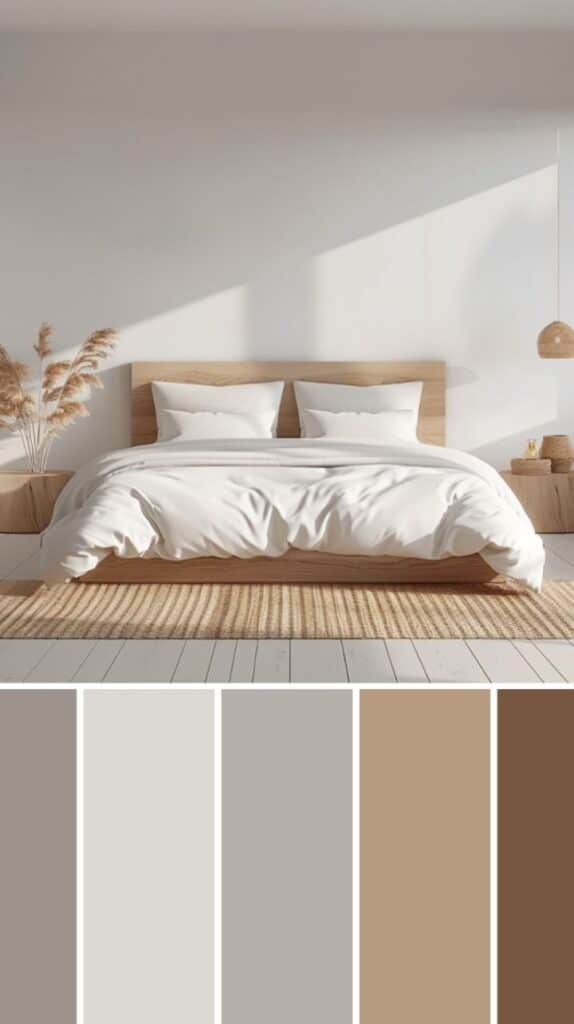
Using Pantone colors in bedrooms ensures accurate color matching. This is key when buying paint, fabrics, or furnishings separately but wanting them to match well.
Pantone colors help create a clear theme. For example, a bedroom can use soft Pantone blues for a relaxing retreat or warm yellows for energy.
The system also supports creativity by providing thousands of shades. It allows choices from bold to subtle colors to fit different styles without risk of clashing tones.
Choosing the Right Pantone Bedroom Color Scheme
Choosing the right color scheme involves understanding the room’s size, light, and the feelings colors create. It also means knowing a person’s style and how colors affect mood.
Assessing Bedroom Size and Lighting
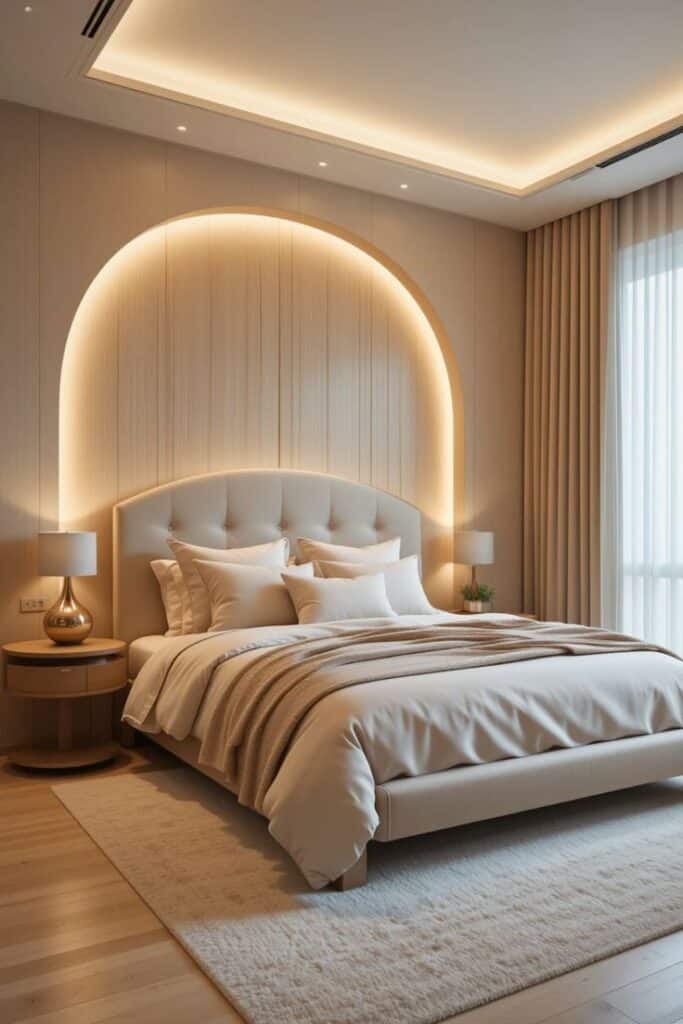
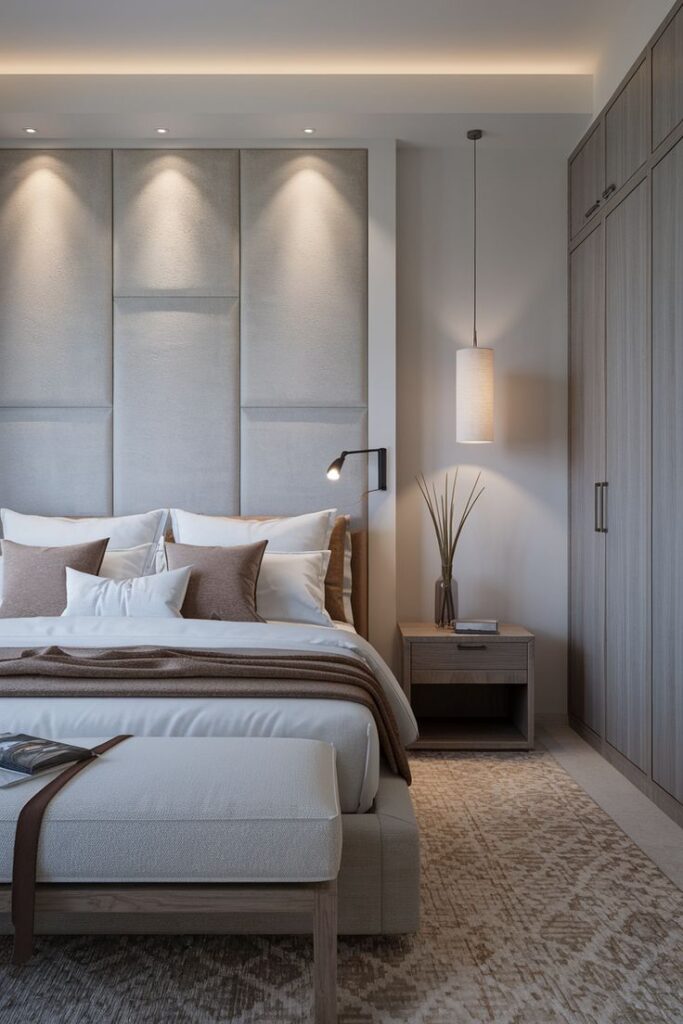
The size of a bedroom greatly impacts which Pantone colors work best. Small rooms benefit from lighter shades like Pantone 11-0602 (Snow White) or Pantone 12-4301 (Angel Falls). These colors make the space feel open and airy.
Large bedrooms can handle darker, richer colors such as Pantone 19-4052 (Classic Blue) or Pantone 19-0927 (Coffee Bean). These create a cozy and intimate atmosphere.
Lighting affects color perception too. Natural light boosts bright colors, while rooms with less sun might look better with warmer tones like Pantone 16-1144 (Golden Rod). Artificial light can shift colors, so testing paint samples at different times is crucial.
Identifying Your Personal Style
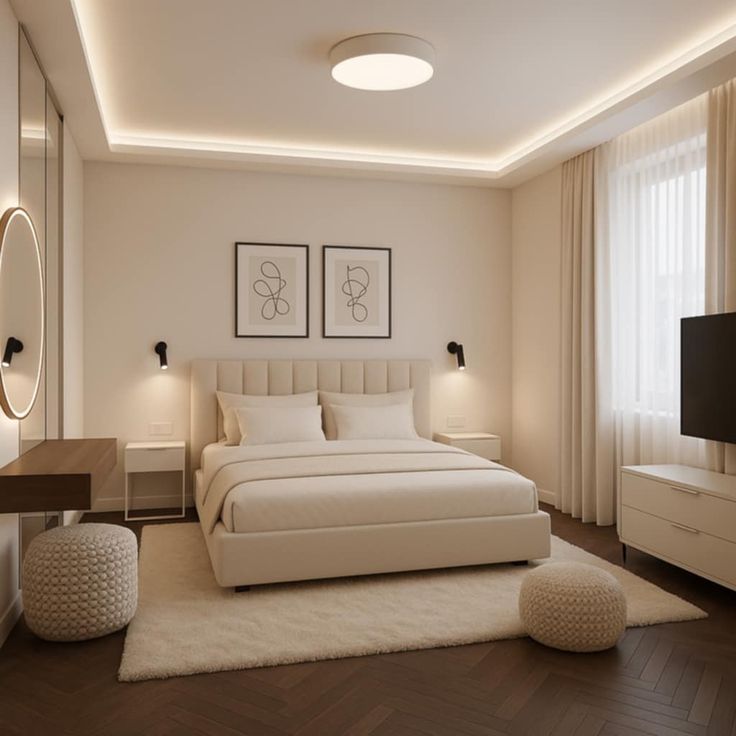
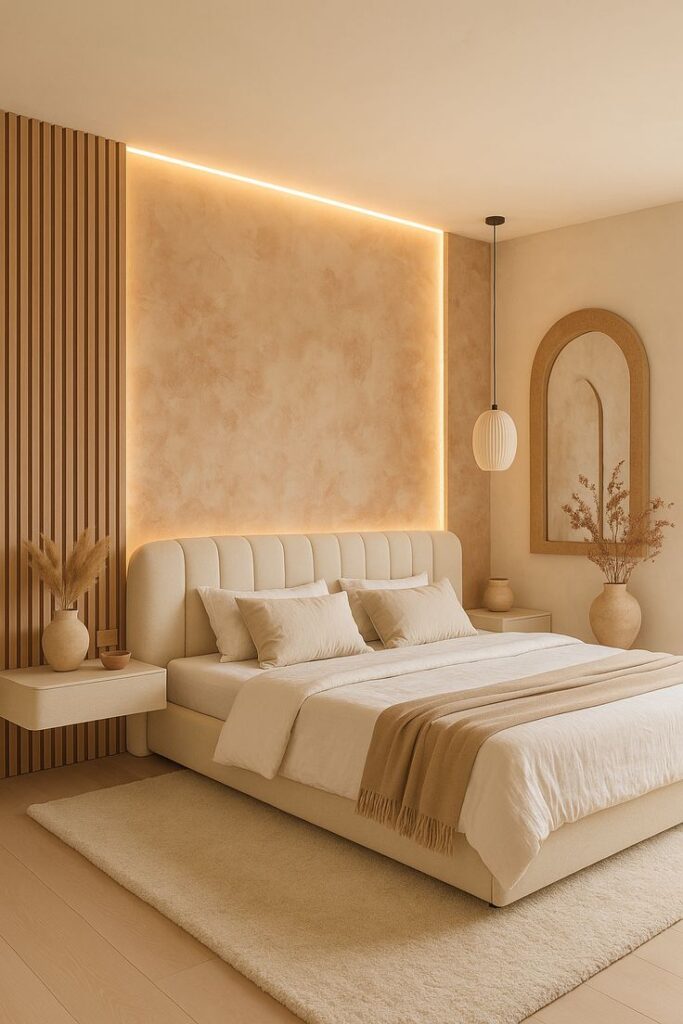
Personal style guides color choice and overall room vibe. Someone who prefers calm might lean toward soft colors such as Pantone 13-4104 (Blue Bell) or Pantone 12-2904 (Rosewater). Those who like bold statements may pick colors like Pantone 17-1564 (Fiery Red) or Pantone 18-1660 (Flame Scarlet).
Styles can be minimalist, traditional, or trendy. Minimalists often stick with neutral tones like Pantone 14-4201 (Cloud Dancer), while traditional tastes might include muted greens or warm neutrals. Trendy styles use vibrant colors mixed with neutrals to balance energy.
Choosing colors that match furniture and decor is important. A clear style vision helps narrow down the best Pantone palette.
Psychology of Color in Bedroom Spaces
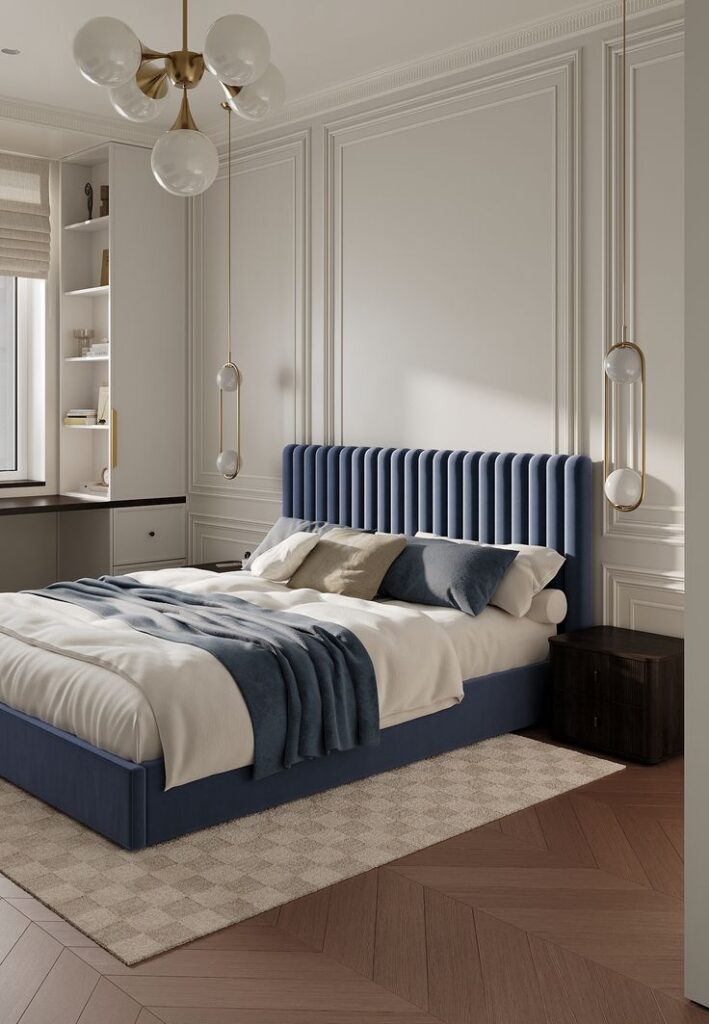
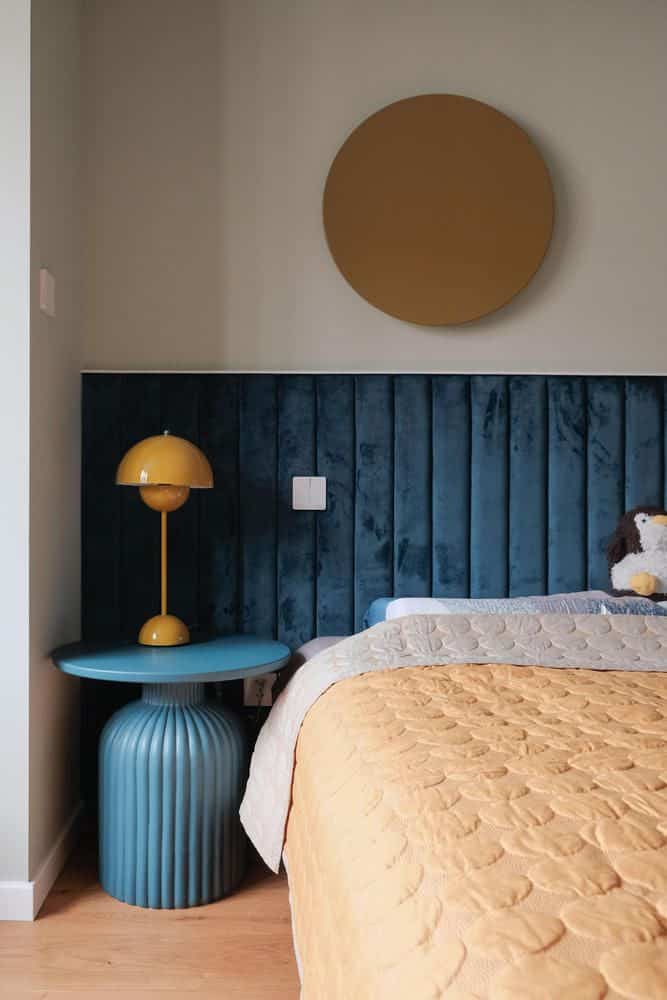
Colors impact mood and restfulness. Blues like Pantone 15-3920 (Blue Fog) lower stress and promote sleep. Greens such as Pantone 15-6316 (Greenery) bring balance and calm.
Warm colors like reds and oranges create energy, which might be better for social areas than bedrooms. However, softer warm tones like Pantone 15-1150 (Marigold) can add warmth without overstimulation.
Neutral colors help keep the mind relaxed and provide a peaceful backdrop. Using accent colors can add personality without overwhelming the mood.
Understanding color psychology helps create a restful bedroom environment tailored to individual needs.
Popular Pantone-Inspired Bedroom Color Palettes
Pantone color palettes can create distinct moods in a bedroom by mixing tones with specific qualities. Some palettes focus on calmness, while others emphasize energy or warmth. Choosing the right palette depends on the desired atmosphere and personal style.
Serene Neutrals and Pastels
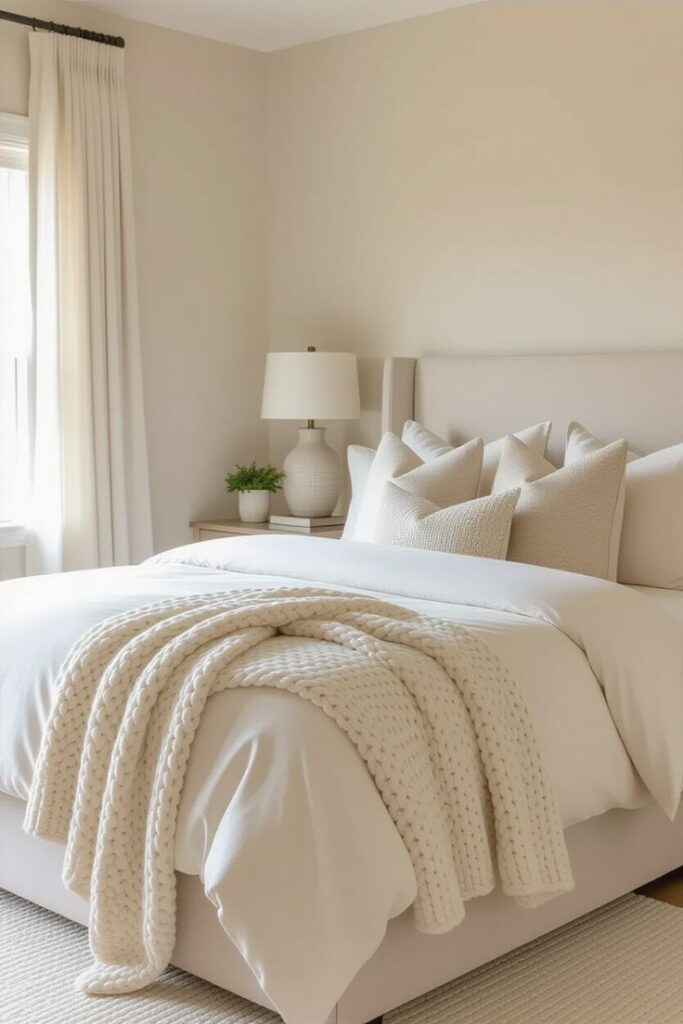
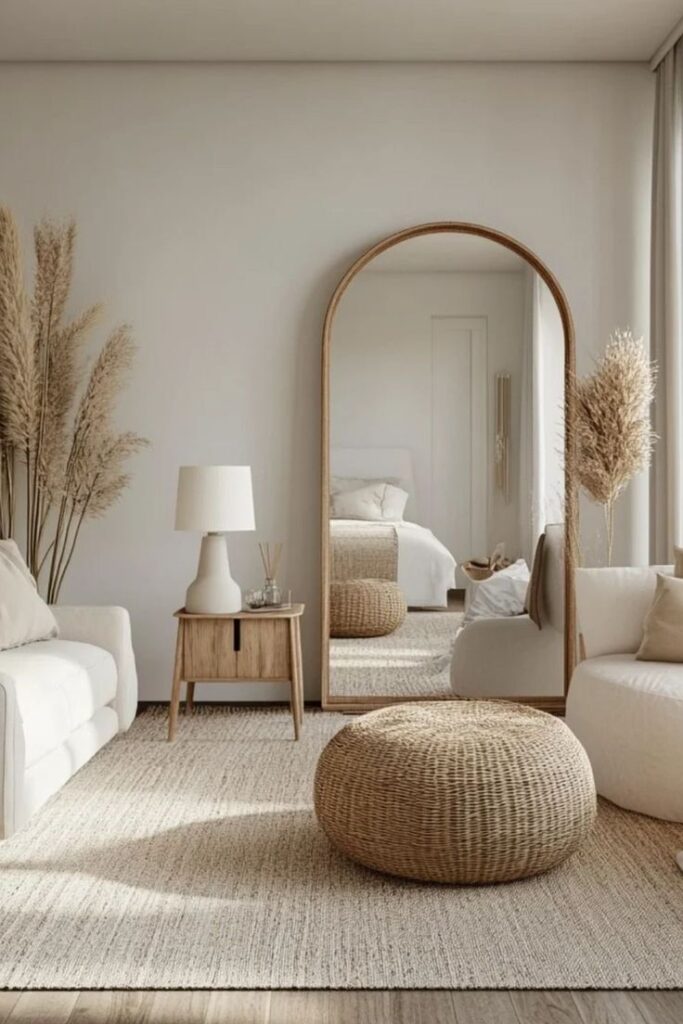
This palette features soft shades like Pantone 13-1404 Quartz Pink, Pantone 12-4201 Snow White, and Pantone 14-4506 Mist Blue. These colors bring a sense of calm and openness to the room. They work well in smaller spaces because they reflect light and make the area feel bigger.
Light grays, gentle blues, and pale pinks are common choices. These hues reduce stress and promote relaxation. They pair well with natural wood and white furniture, creating a fresh, airy look. Soft fabrics and minimal patterns complement this calm color scheme.
Bold and Vibrant Hues
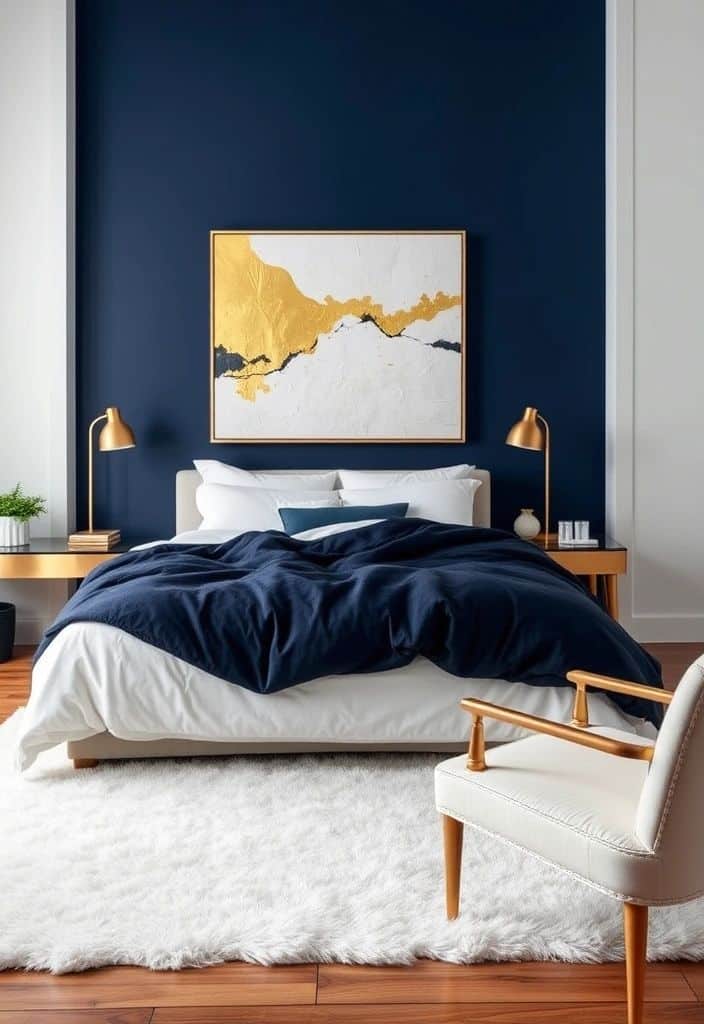
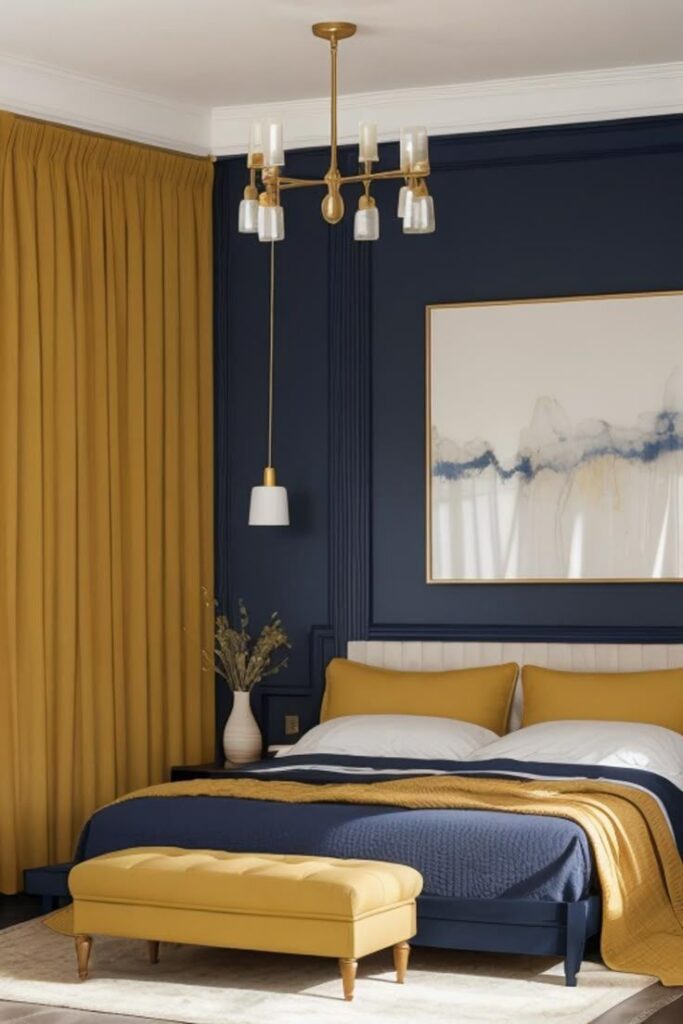
Bright colors such as Pantone 17-1564 Flame Scarlet, Pantone 18-3949 Blueberry, and Pantone 16-1364 Orange Tiger add energy to a bedroom. These hues are strong and eye-catching, perfect for those who want a lively space.
Using these colors on an accent wall or in accessories like bedding or curtains can bring vibrancy without overwhelming the room. Balance is key. Pairing bold hues with neutral walls or furniture helps avoid a cluttered feeling and keeps the space inviting.
Earthy and Warm Tones
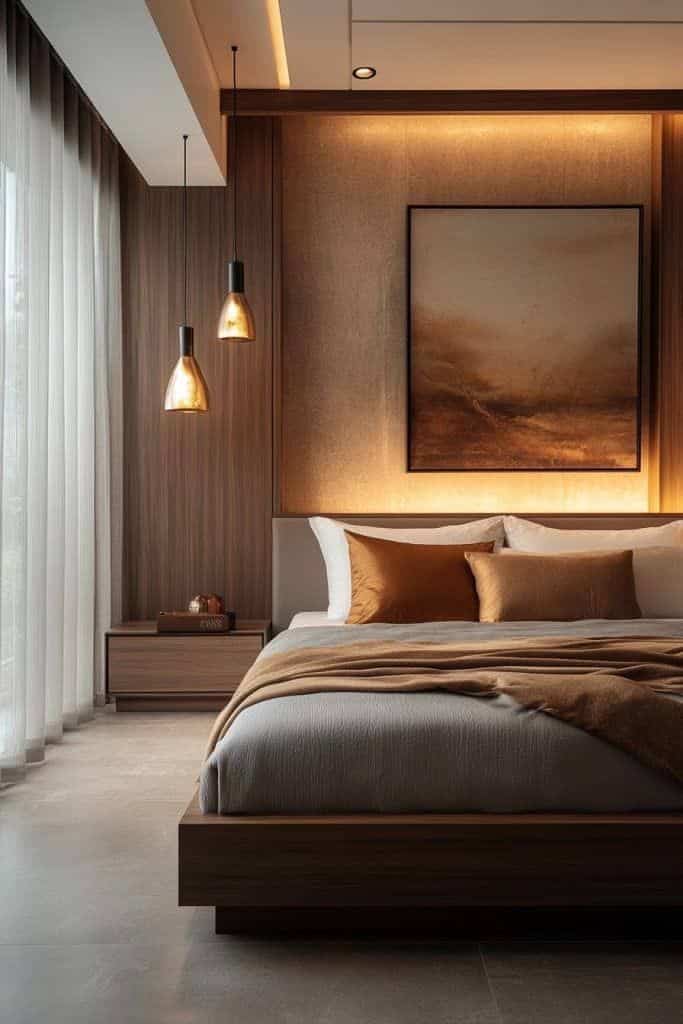
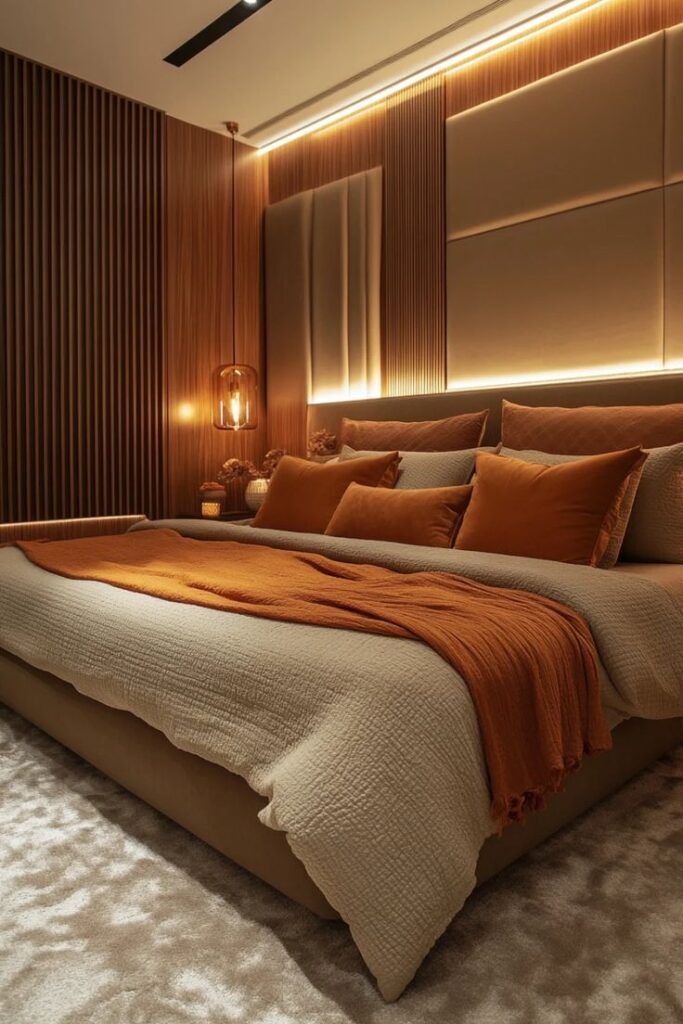
Warm shades like Pantone 18-1248 Chili Pepper, Pantone 16-1334 Caramel Cafe, and Pantone 19-1010 Coffee Liqueur create a cozy, grounded atmosphere. These colors work well with textures like leather, wool, and wood.
They offer a natural feel, often inspired by autumn forests or desert landscapes. This palette is good for those who want a comfortable, inviting bedroom. Soft lighting amplifies the warmth and depth of these tones, making the room feel snug.
Monochromatic Blue Schemes
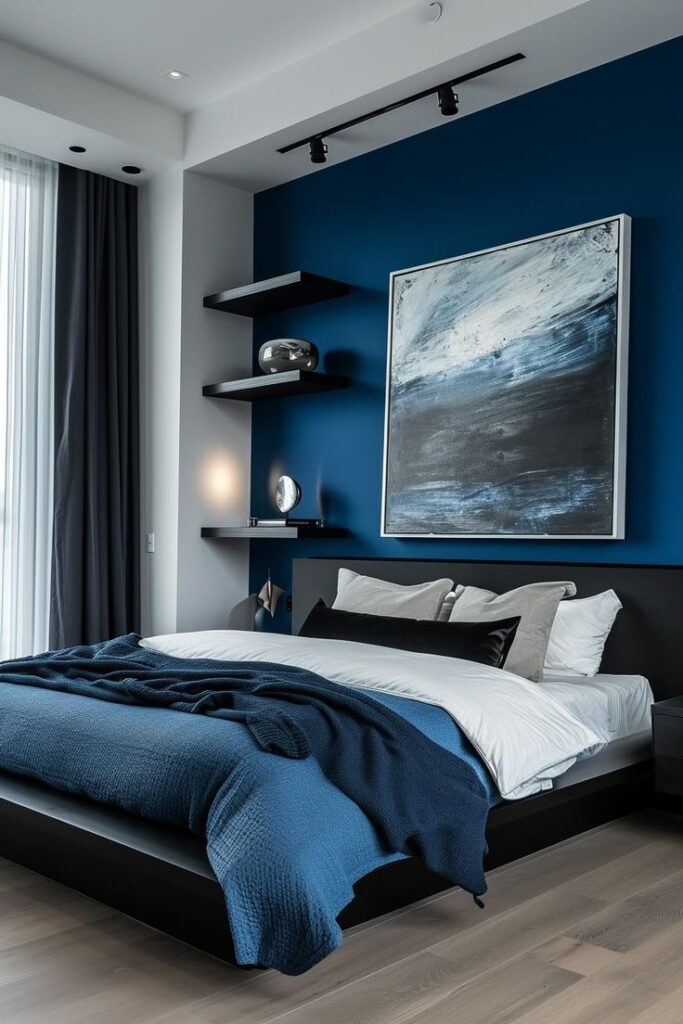
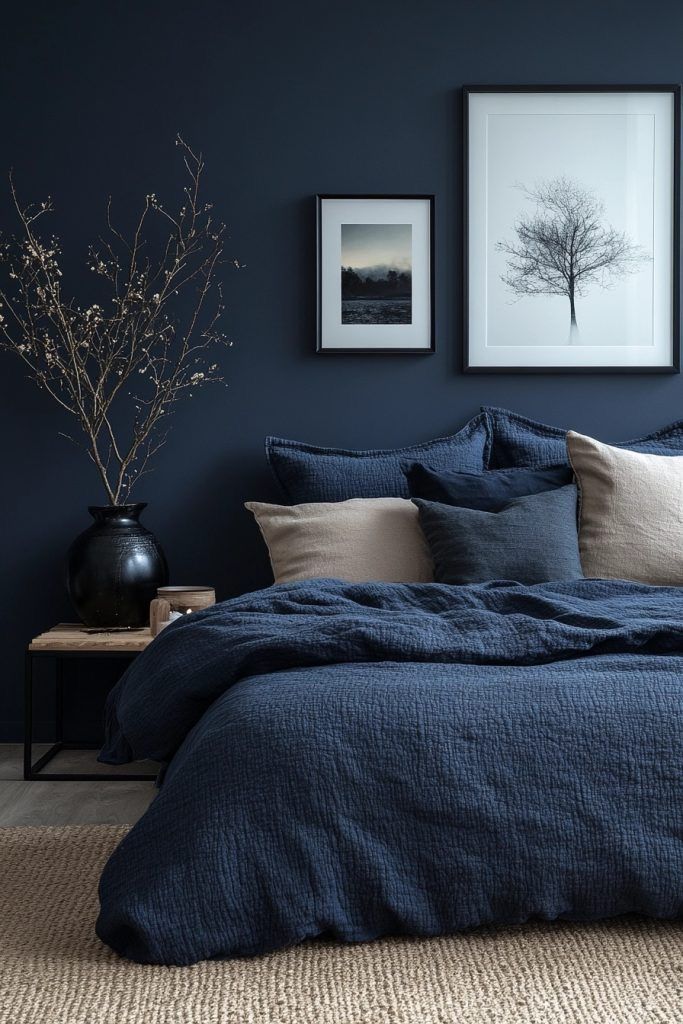
Using shades of blue from light to dark, such as Pantone 14-4318 Serenity, Pantone 19-4052 Classic Blue, and Pantone 18-3943 Nautical, creates a cohesive and restful space. Blue is known for its calming effects and can improve sleep quality.
A monochromatic palette allows for mixing textures and finishes. Matte and glossy blues together add interest without color clash. This scheme is ideal for bedrooms that aim to feel peaceful and orderly, fitting well with white trim and silver or gray accents.
Pantone Color of the Year Bedroom Ideas
Choosing the right colors can change the mood of a bedroom. Using the Pantone Color of the Year offers a fresh look and keeps the space stylish. Understanding how to apply this color helps in making the room inviting and modern.
Current Pantone Color of the Year
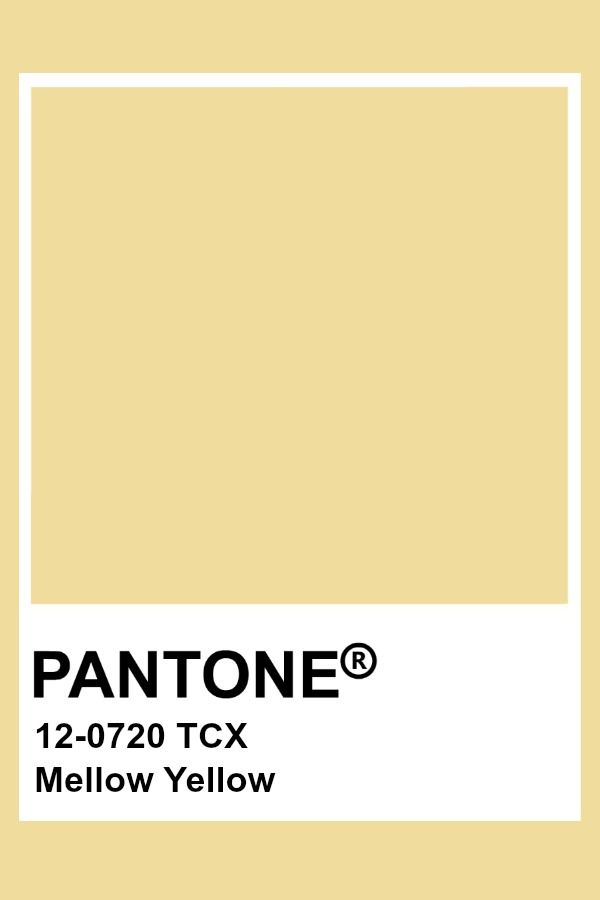
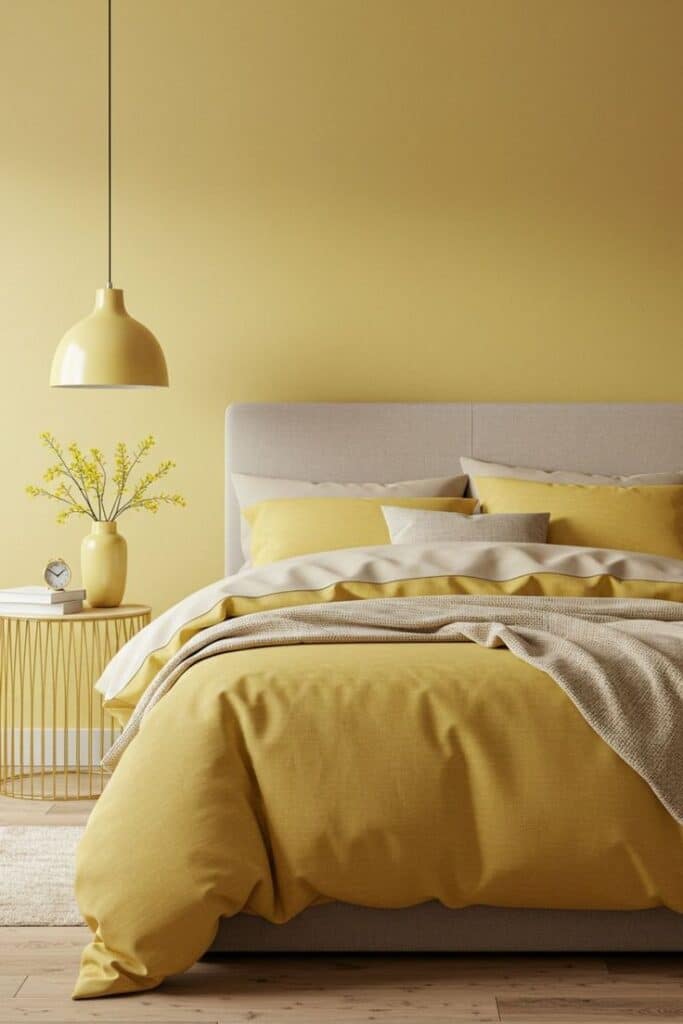
The 2025 Pantone Color of the Year is “Mellow Yellow.” This shade is soft, warm, and bright without being too loud. It adds a cheerful and calm vibe to a bedroom.
Using Mellow Yellow on walls creates a sunny atmosphere that encourages relaxation. It works well with natural light and makes the room feel more open.
Suggestions:
- Paint one accent wall in Mellow Yellow for a pop of color.
- Choose bedding or curtains in the shade to brighten the space.
- Combine with white or neutral tones to balance the brightness.
Integrating the Trending Shade
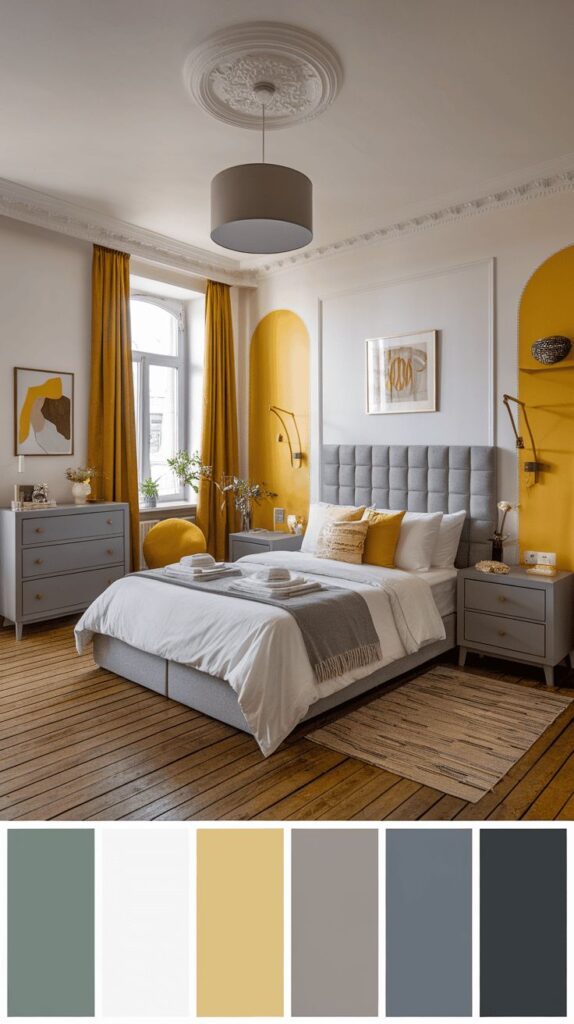
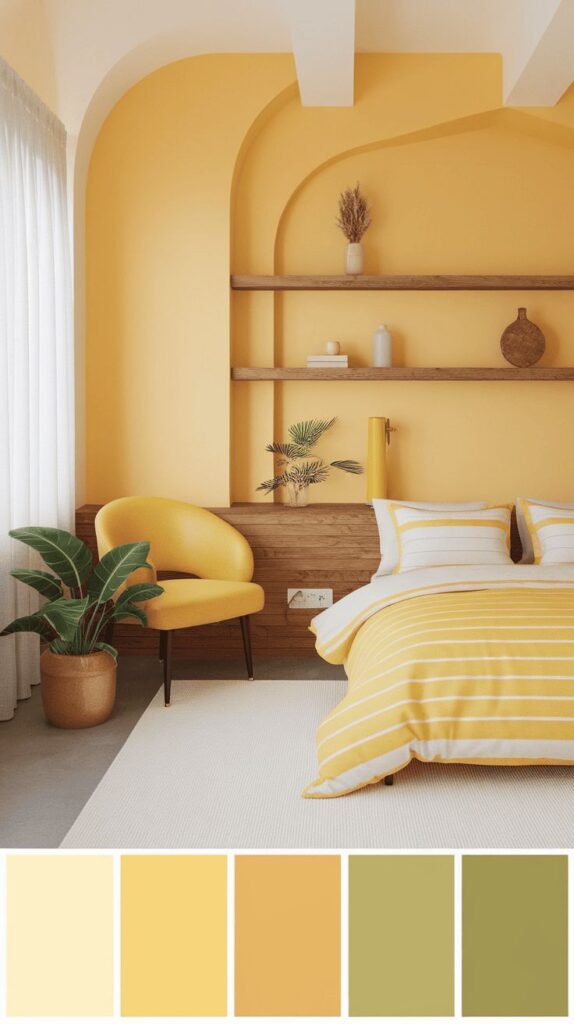
To use Mellow Yellow without overwhelming the room, balance it with neutral colors like beige, gray, or soft white. This mix keeps the room from feeling too bright or busy.
Furniture and décor can include subtle accents of the color: throw pillows, lamps, or rugs. These smaller touches integrate the trendy shade while allowing flexibility to change the style easily later.
Tips for layering:
- Use yellow accessories on light wood furniture.
- Soft gray and yellow bedding sets create a restful look.
- Add green plants to complement the yellow and bring freshness.
Timeless Applications for Future Years
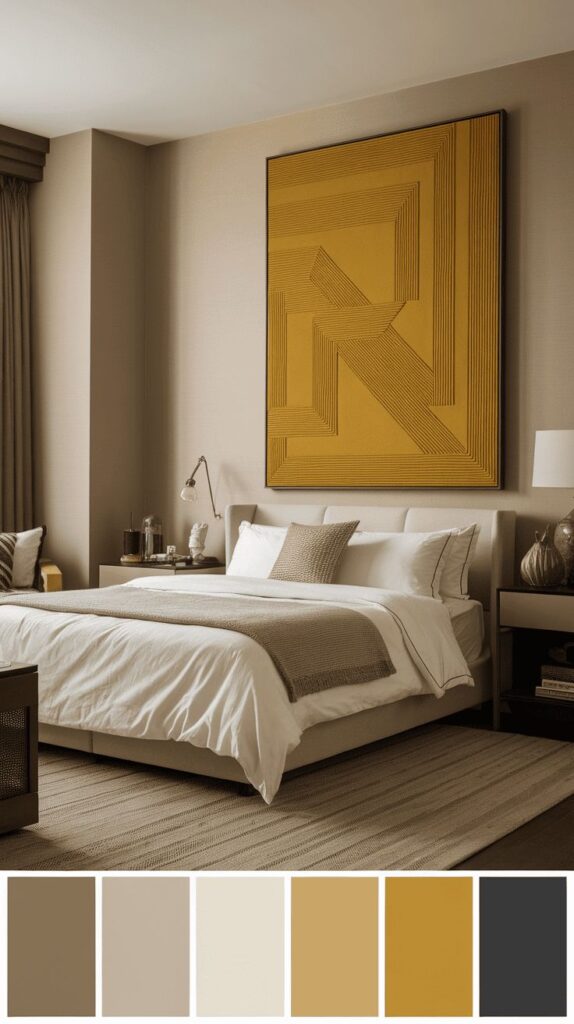
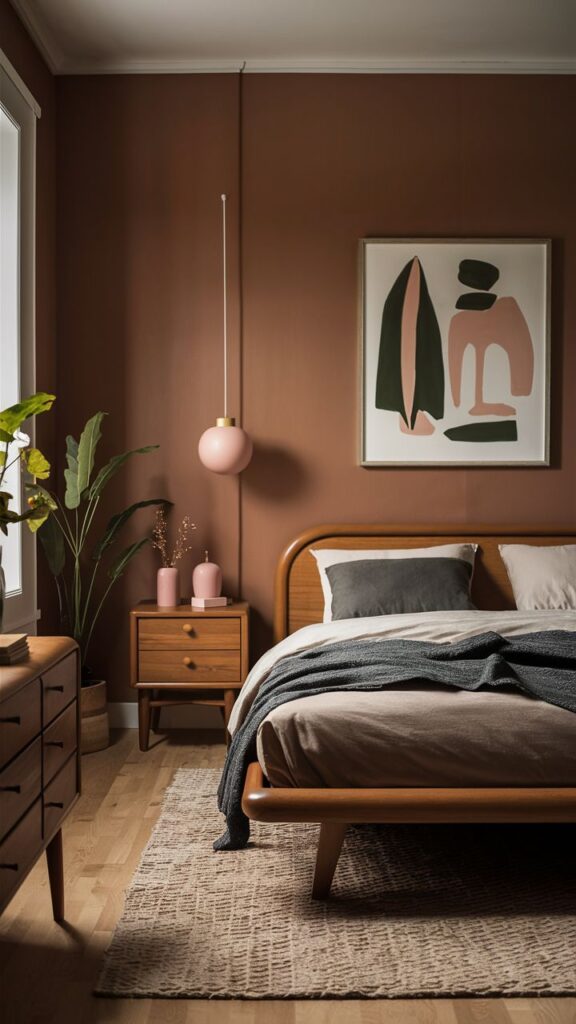
Yellow tones like Mellow Yellow can be used in a way that lasts beyond this year’s trend. Choosing muted shades of yellow ensures the bedroom won’t feel outdated quickly.
Neutral and classic room elements paired with yellow keep the look adaptable. For example, white furniture and simple lines maintain style even as trends change.
Durable ideas:
| Element | Notes |
|---|---|
| Wall Paint | Use a soft version for longevity |
| Bedding | Mixed with gray or cream shades |
| Art or Decor | Choose pieces with minimal yellow |
This approach prevents the space from needing frequent updates while still using the Pantone shade effectively.
Accent Walls and Feature Elements
Accent walls and feature elements can change the look of a bedroom quickly. Using Pantone colors in these areas adds style without overwhelming the whole space. Careful choices in paint and decor help create balance and interest.
Creating a Focal Point with Pantone Colors
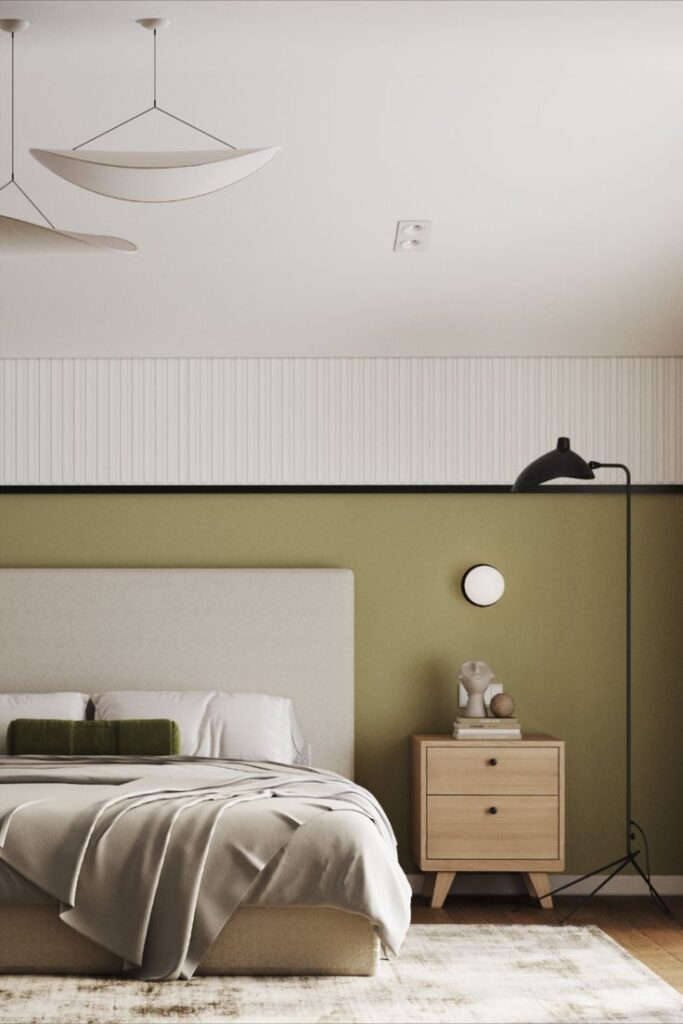
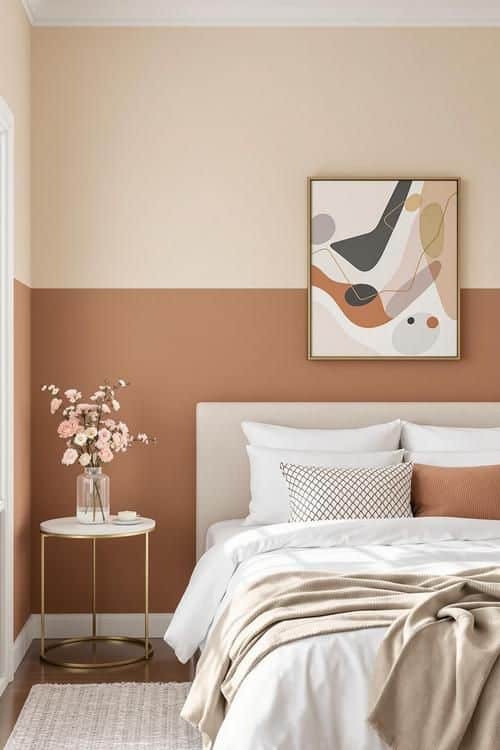
An accent wall draws attention and gives the room a clear center. Choosing a strong Pantone color like PANTONE 19-4052 Classic Blue or PANTONE 17-1463 Flame can energize the space.
Usually, the wall behind the bed or the largest wall works best. Bold colors stand out well against neutral shades on the other walls. Matte or eggshell finishes keep the color soft but defined.
Using an accent wall also adds depth by contrasting with lighter walls. This method avoids the cost and effort of painting the entire room in a strong color.
Contrasting Trim and Molding
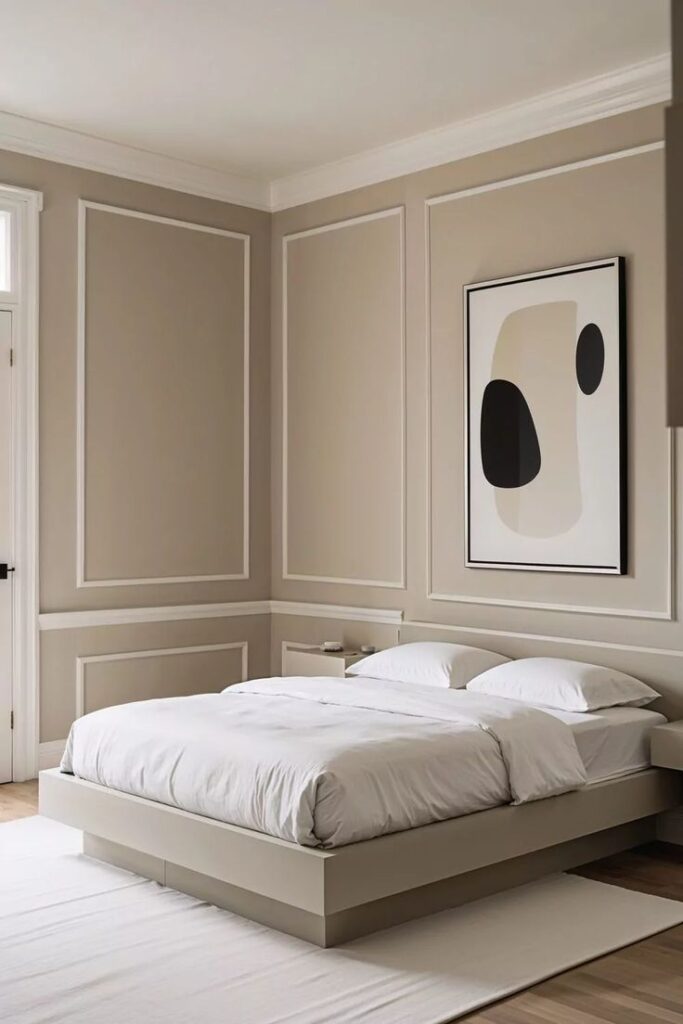
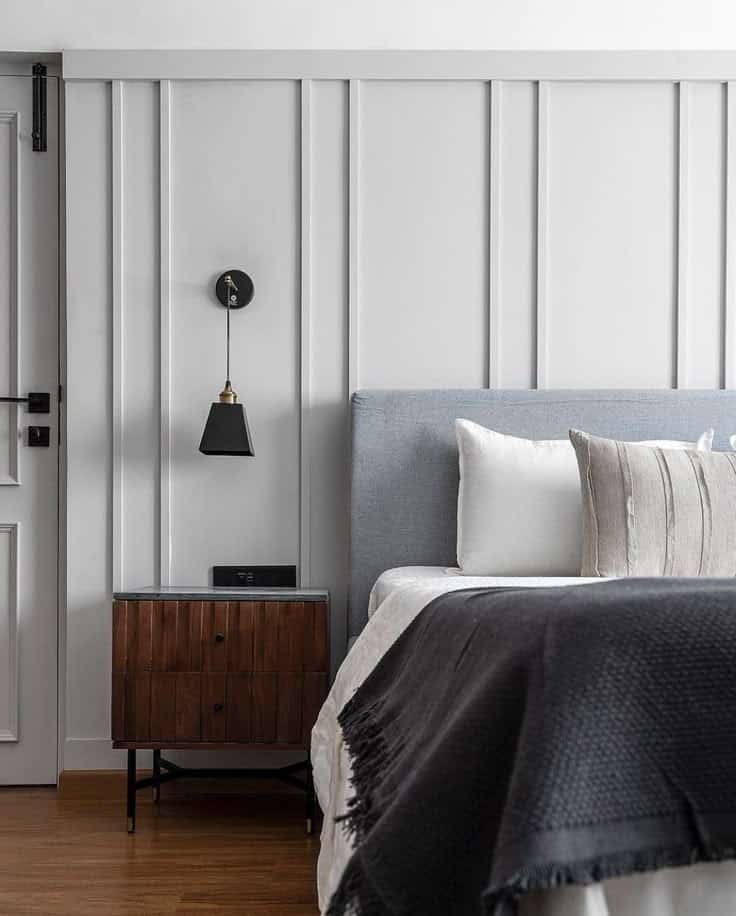
Trim and molding painted in Pantone colors can highlight architectural features. For example, PANTONE 13-0647 Illuminating yellow trim stands out beautifully against white or gray walls.
This contrast adds visual interest without overpowering the room. It can frame doors, windows, and baseboards with color that ties into the overall palette.
Choosing a lighter or darker shade of the main wall color for trim creates subtle layering. This technique is effective for rooms that want a polished but calm look.
Coordinating Textiles and Decor
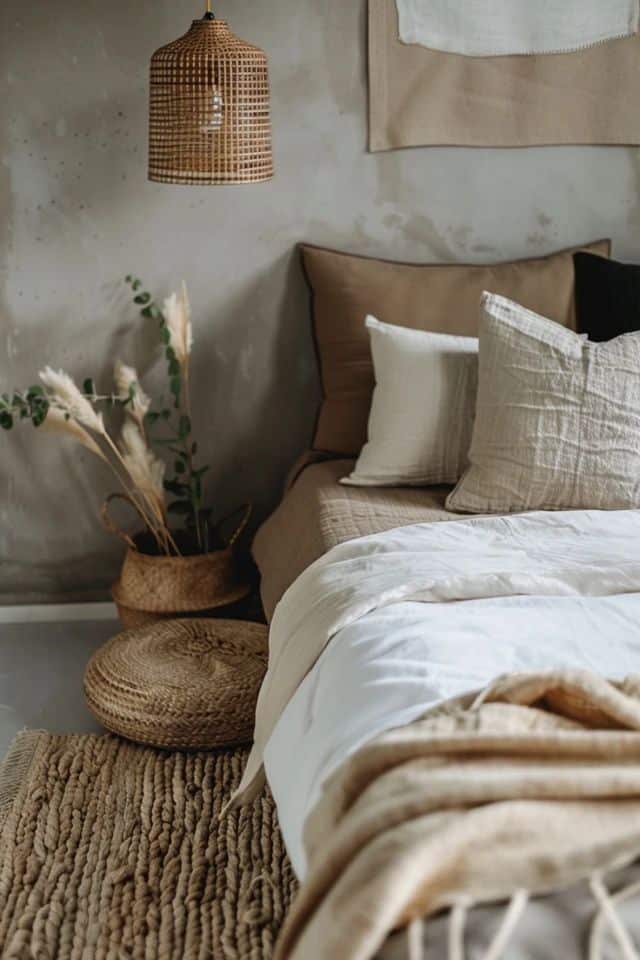
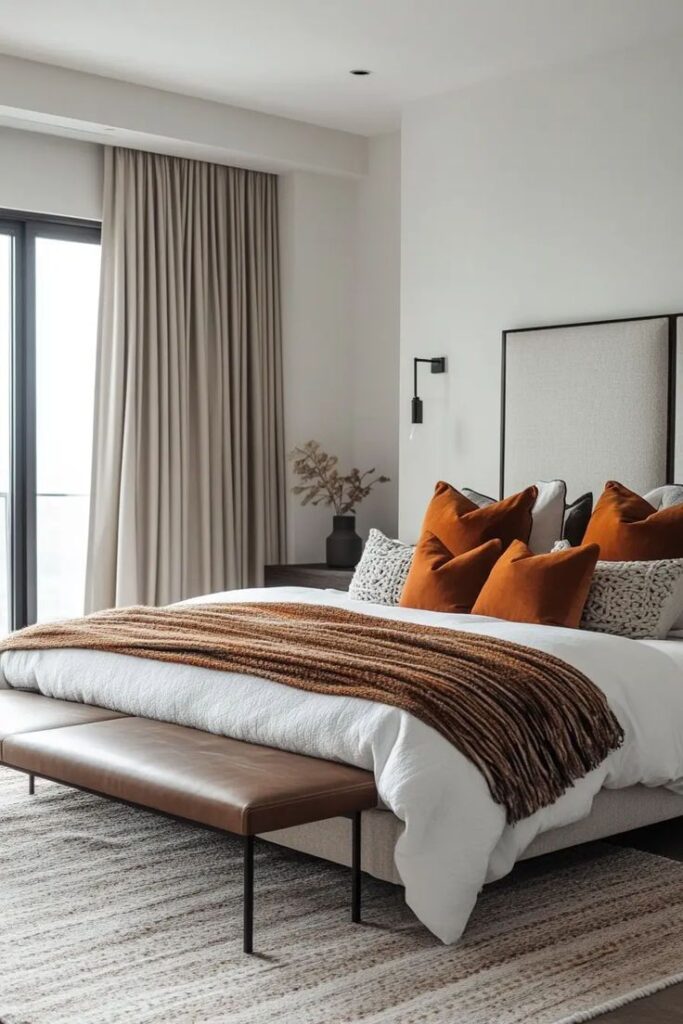
Textiles like curtains, pillows, and rugs offer chances to add Pantone colors without paint. Matching these elements to the accent wall or trim brings the room together.
For example, a bedspread in PANTONE 16-1546 Living Coral can complement a neutral background. Curtains with a pop of PANTONE 18-3838 Ultra Violet create contrast and texture.
Decor items such as lamps, vases, and artwork can echo the Pantone palette. These small touches reinforce color choices and make the room feel planned and cozy.
Lighting and Pantone Color Interactions
Lighting changes how Pantone colors look in a bedroom. Natural or artificial light can make colors seem different in shade, brightness, and tone. Understanding these effects helps create the right mood and appearance.
Maximizing Natural Light
Natural light shows Pantone colors in their purest form. When sunlight enters a room, it highlights the true shade and undertone of paint. Light from the south will be warmer and brighter, making colors appear more vivid.
Colors with cool undertones, like blues or greens, look fresh in natural light. Warm colors, such as reds or oranges, might seem softer or muted in direct sunlight. Placement near windows improves how the colors are seen throughout the day.
Reflective surfaces can increase natural light, improving visibility of Pantone colors. Sheer curtains or light blinds allow sunlight without harsh glare. These choices help balance brightness and preserve color integrity.
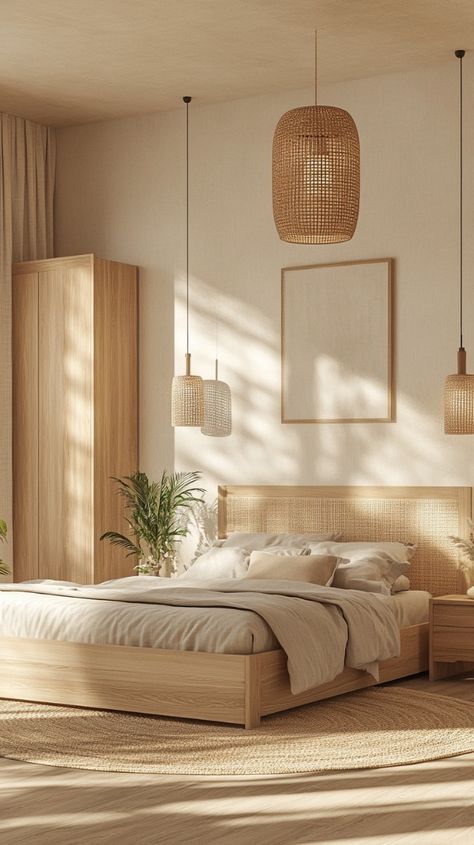
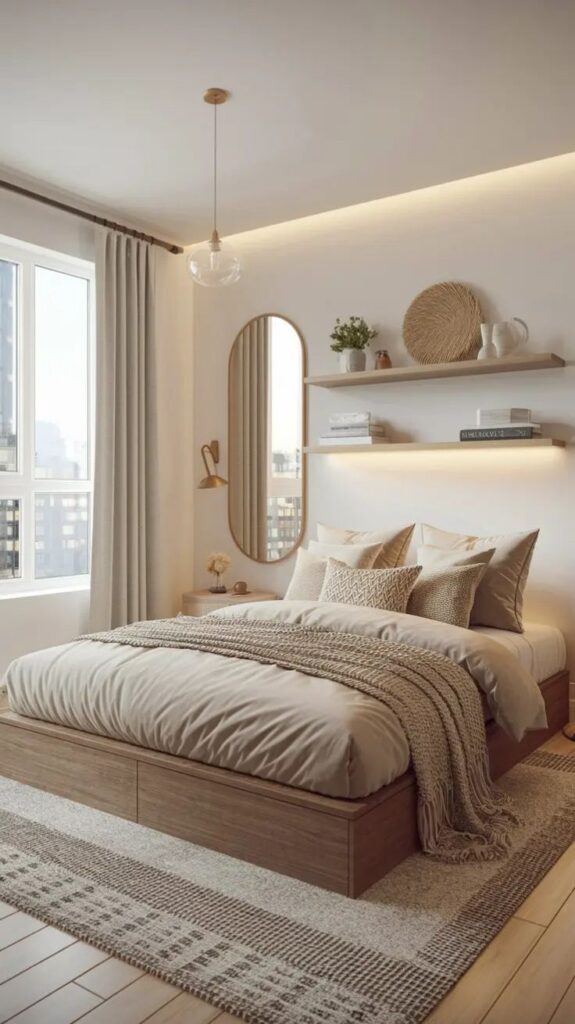
Artificial Lighting Effects on Colors
Artificial lighting changes the tone of Pantone colors based on bulb type. Incandescent bulbs emit warm light, making yellows, reds, and browns appear richer but can dull blues and greens.
LED lights vary widely; cool white LEDs boost blues and greens but may make warm colors seem washed out. Fluorescent lights often cast a blue or green tint, affecting the appearance of most Pantone colors.
Color temperature (measured in Kelvin) matters:
- Below 3000K: warm, soft light
- 3000K-4500K: neutral light
- Above 4500K: cool, daylight-like light
Using adjustable lighting or mixing bulbs allows more control over how colors show, making rooms more flexible for mood and function.
Pantone Color Schemes for Different Bedroom Styles
Choosing the right Pantone colors depends on the bedroom style. Certain shades help create modern, cozy, or artistic atmospheres. Knowing which color tones fit each style can guide better decorating choices.
Modern and Minimalist Bedrooms
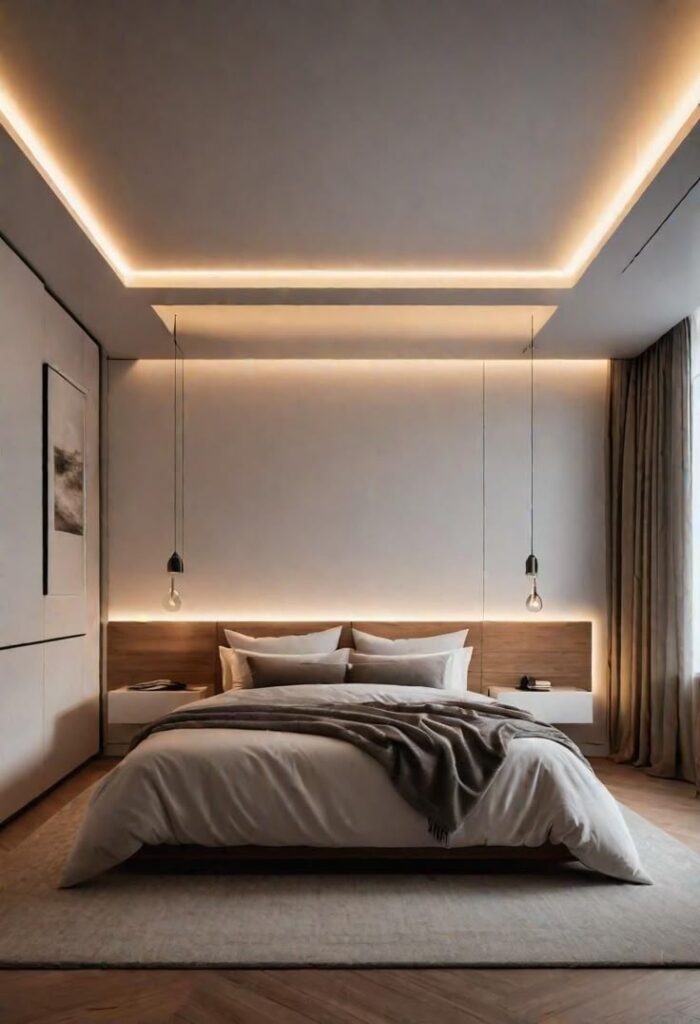
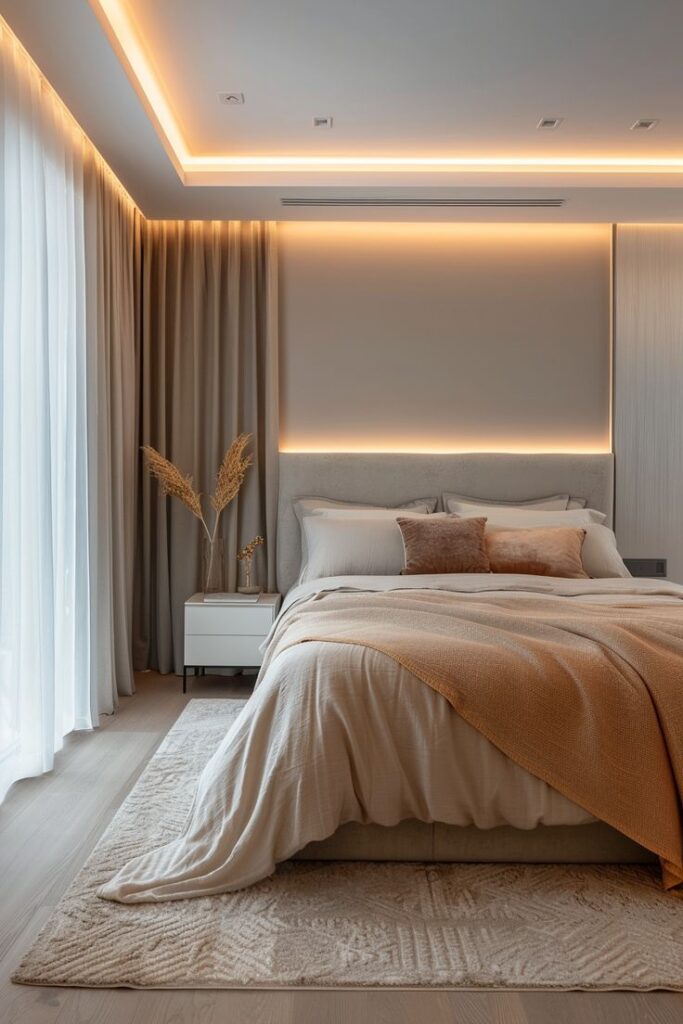
Modern bedrooms often use cool, neutral tones. Pantone colors like Cool Gray 11 C and Ultimate Gray 17-5104 work well to keep spaces clean and simple. These shades create calmness without distraction.
Adding a pop of color with Classic Blue 19-4052 or Living Coral 16-1546 can bring warmth or energy without breaking the minimalist feel. The key is to use colors sparingly for accents like pillows or art.
Matte finishes and smooth textures highlight the colors’ crispness. Monochrome schemes or simple duotones can add depth without cluttering the space.
Cozy and Traditional Spaces
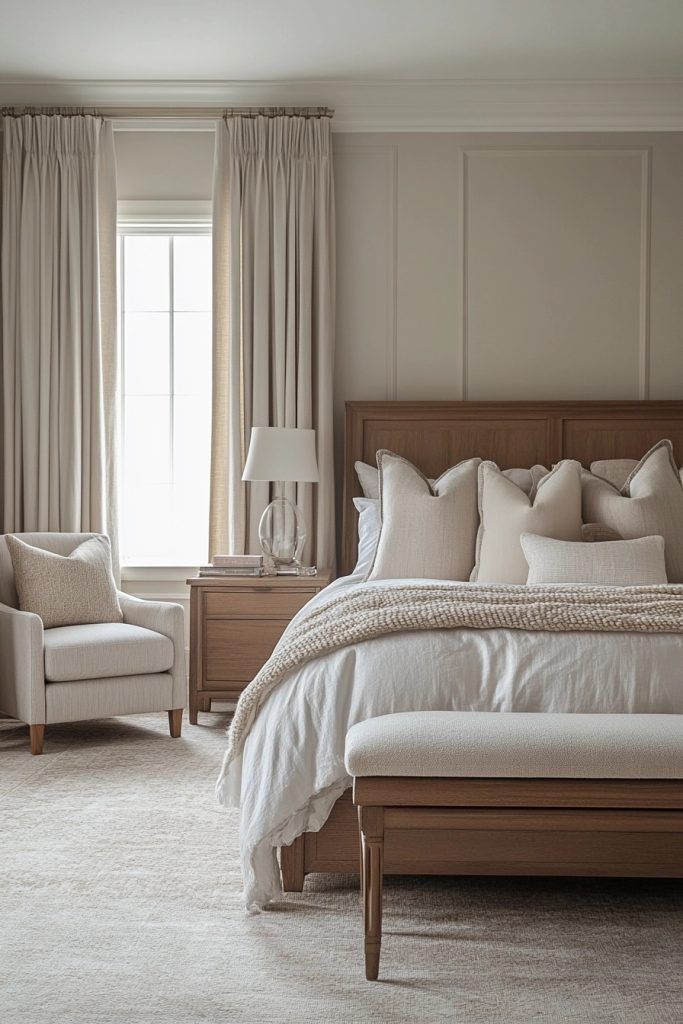
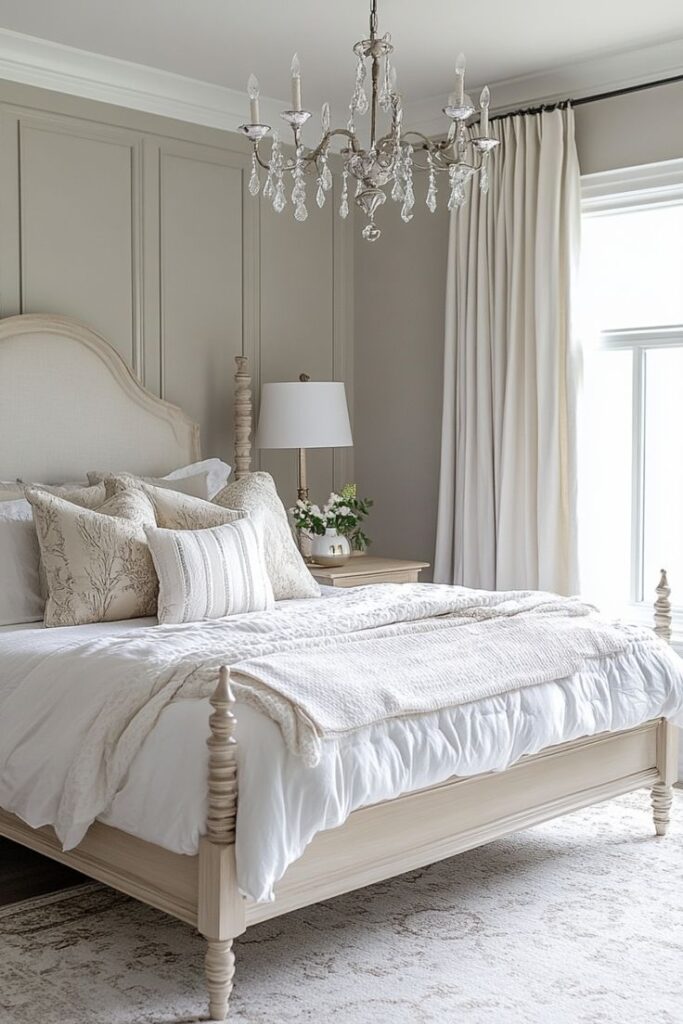
Warm and earthy Pantone colors suit cozy and traditional bedrooms. Shades like Burnt Sienna 18-1350 and Rust 17-1443 add a comforting feel. These hues make rooms feel inviting and lived-in.
Soft neutrals like Almond Buff 12-0712 and Peach Echo 16-1548 balance the deeper colors. These bring light to rooms without coldness.
Using a mix of warm shades in bedding, rugs, and curtains helps create layers. Wood furniture looks great paired with these tones. The approach focuses on warmth and comfort.
Eclectic and Artistic Looks
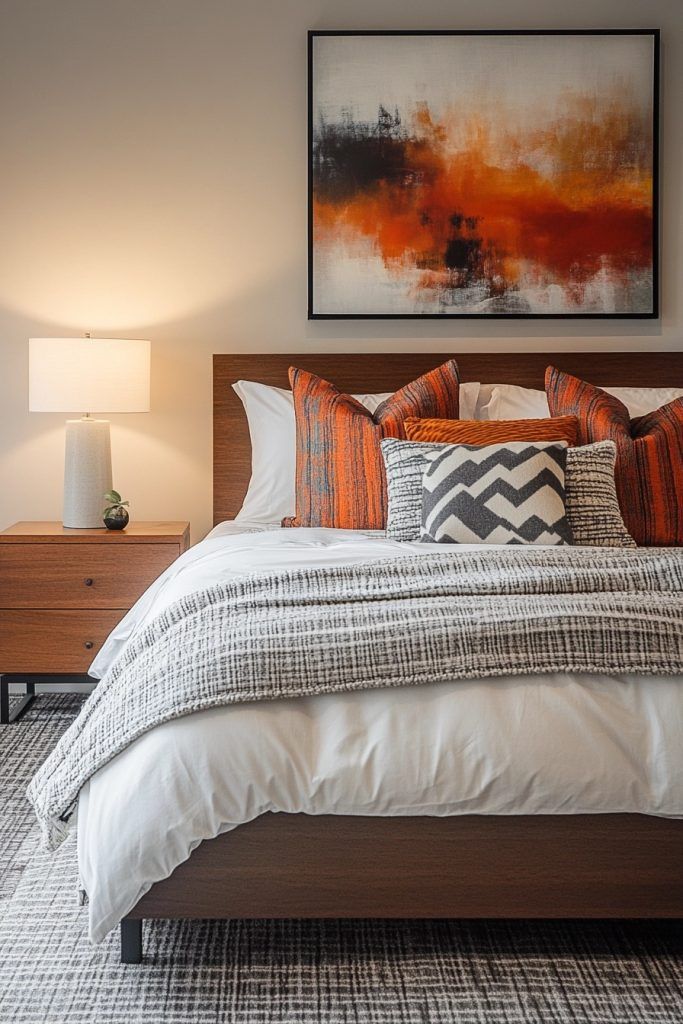
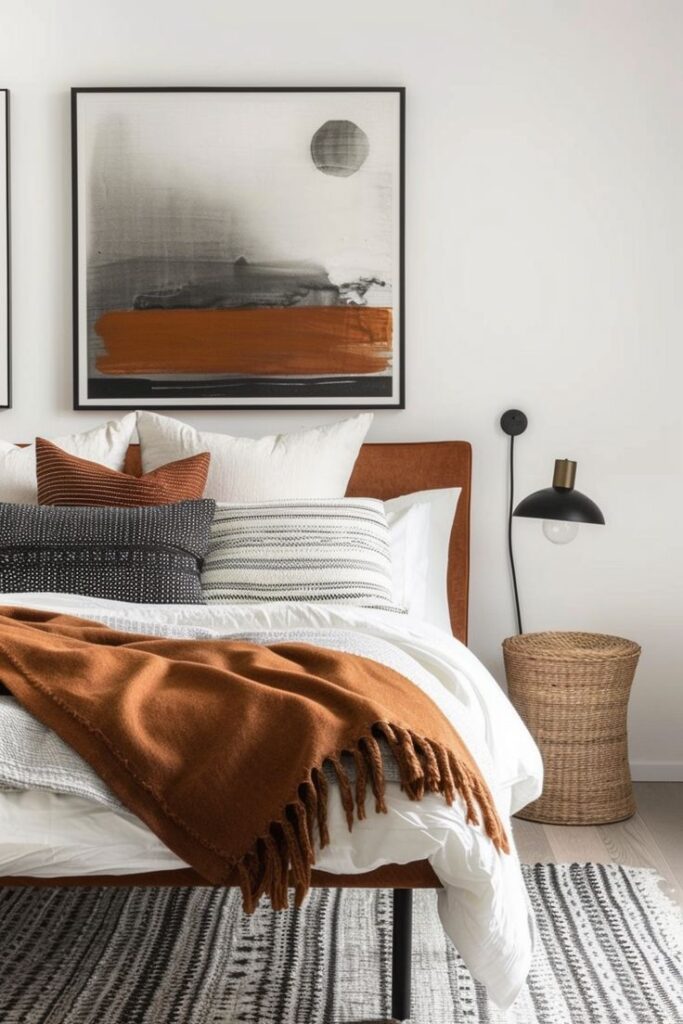
Eclectic bedrooms benefit from bold and unexpected Pantone colors. Vibrant choices like Fuchsia Fedora 18-2436 and Lemon Chrome 13-0858 create visual interest and energy.
Mixing saturated hues with neutrals like Pearl White 11-0105 can prevent the look from overwhelming the space. Color blocking or playful patterns bring style variety.
Art-inspired rooms use color to express personality. Accent walls or unique decor in these vivid Pantone shades add creativity and fun. The idea is to avoid uniformity and embrace diversity in color.
Tips for Maintaining Pantone-Inspired Bedrooms
Maintaining a Pantone-inspired bedroom requires attention to paint type, color durability, and ways to refresh the look. These factors help keep the colors vibrant and the space feeling updated over time.
Choosing Paint Finishes
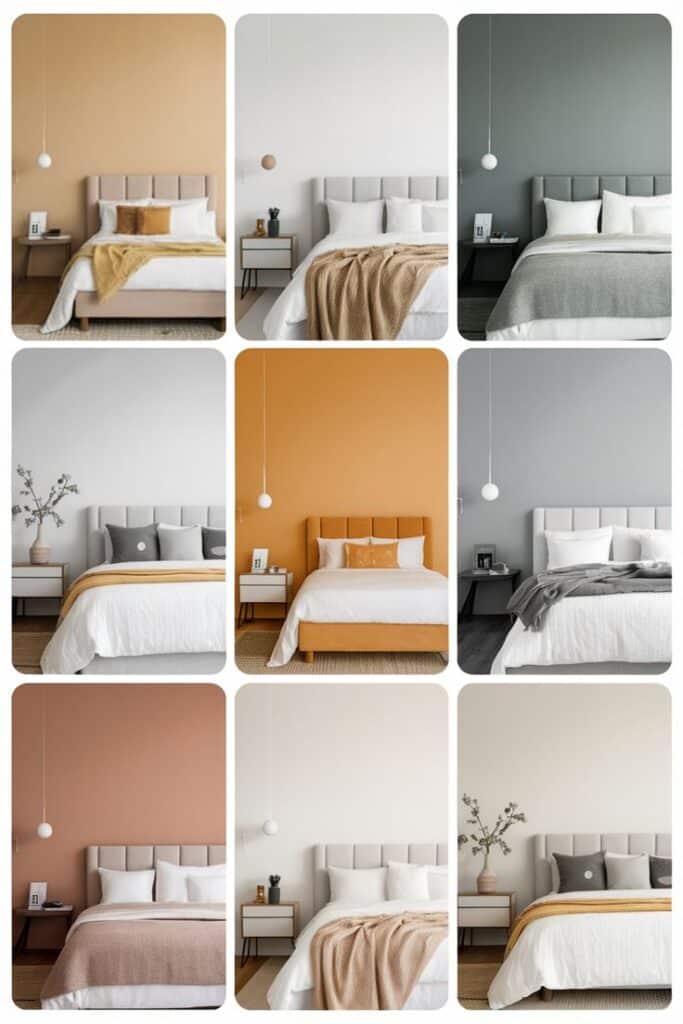
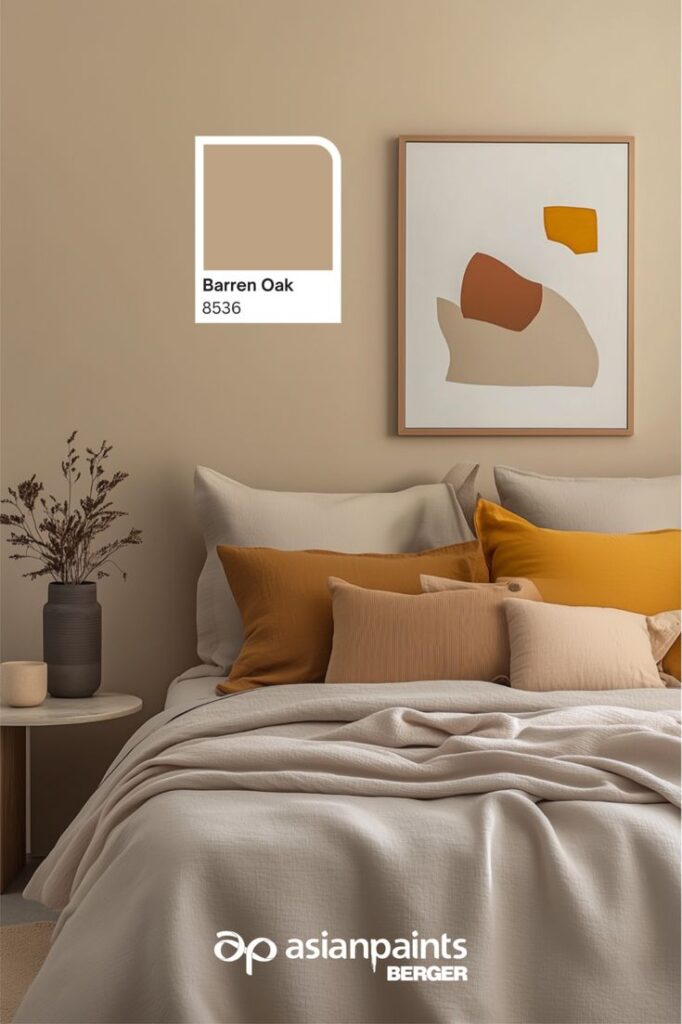
The finish of the paint affects both the look and the durability of the color. For bedrooms, matte or eggshell finishes are popular because they hide wall imperfections and give a soft, calming effect.
Satin and semi-gloss finishes are more durable and easier to clean, which works well for high-traffic areas or walls that may get dirty. However, these finishes reflect more light and can change how the color looks in a room.
When choosing a finish, consider the bedroom’s lighting and how much wear the walls will get. Sample small sections first to see how the finish affects the Pantone color you selected.
Color Fastness and Longevity
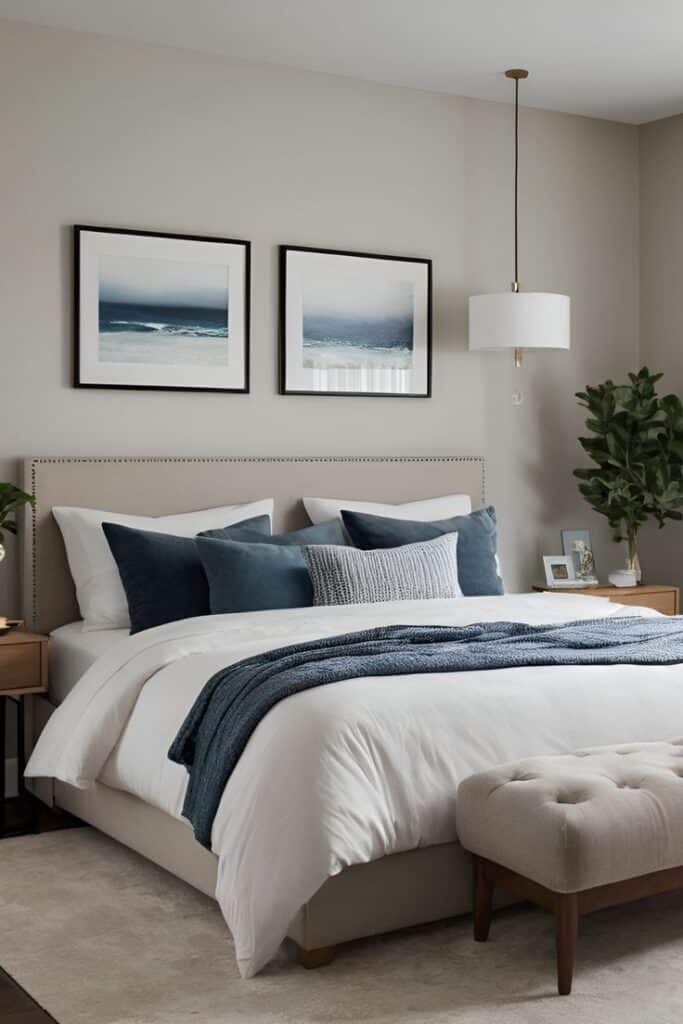
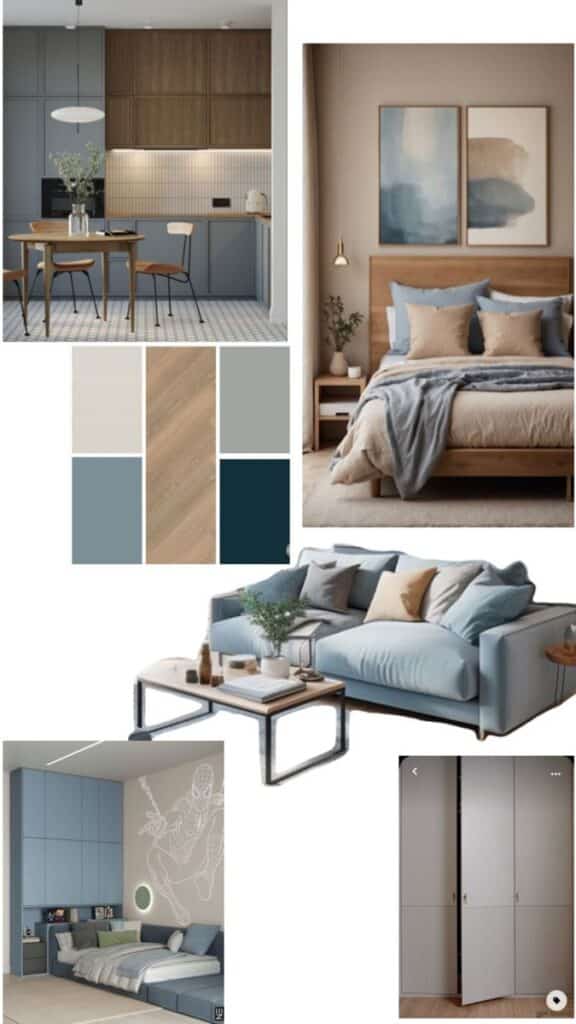
Pantone colors can fade over time due to sunlight and wear. To keep colors true, it is best to use high-quality, UV-resistant paints designed to maintain color over years.
Avoid placing the bed or furniture directly against walls that get strong sunlight, as constant exposure can fade the paint faster. Window treatments like curtains or blinds help control light and protect the color.
Regular cleaning with gentle methods, such as dusting or wiping with a damp cloth, prevents grime buildup that dulls the color. Avoid harsh chemicals that can strip or damage the paint.
Easy Updates and Refreshes
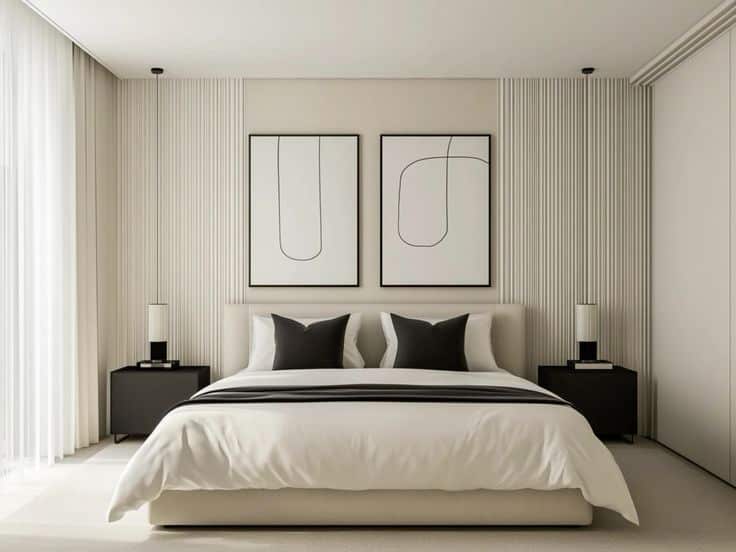
Pantone-inspired bedrooms can be updated quickly without a full repaint. Swapping out bedding, pillows, or curtains in complementary Pantone shades refreshes the look while staying consistent with the color scheme.
Accent walls or small areas are easier to repaint, allowing for changes without major work. Using removable wallpaper in a Pantone color can also add versatility.
Repainting trim or furniture in matching or contrasting Pantone tones gives another way to update the room without changing all the walls. This approach keeps the room fresh and on-trend with minimal effort.
Common Mistakes to Avoid With Pantone Bedroom Colors
Choosing the right Pantone colors for a bedroom involves careful planning. Mistakes in color use can affect the room’s mood, balance, and purpose. Avoiding color overload, understanding undertones, and considering how the room is used are key to success.
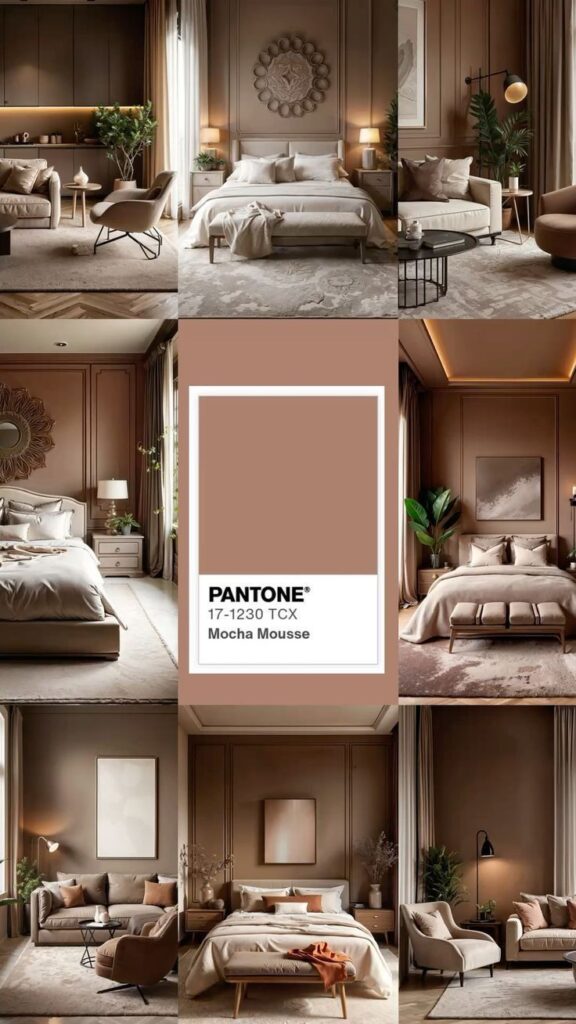
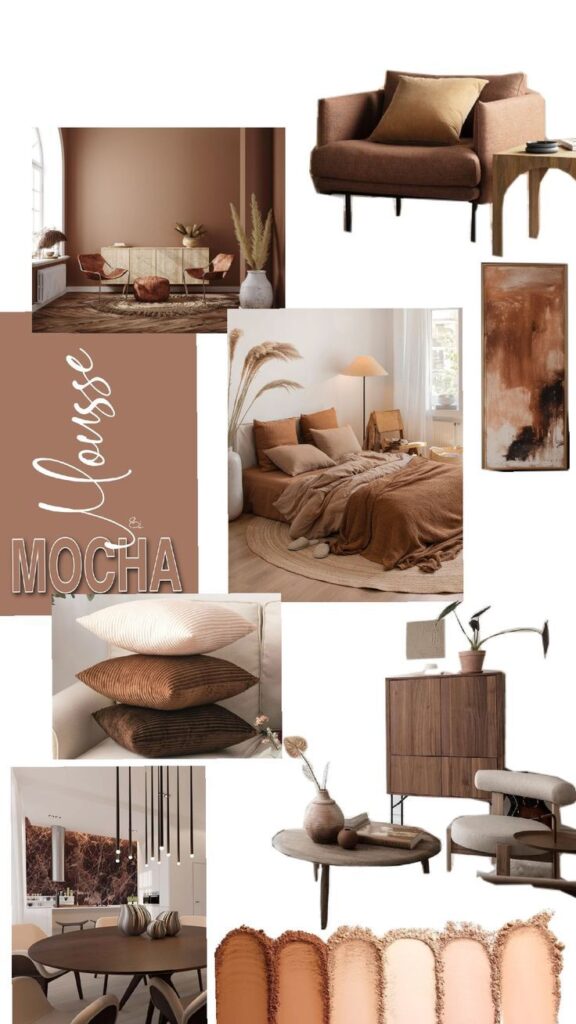
Overwhelming the Space with Color
Using too many bold Pantone colors can make a bedroom feel chaotic rather than restful. Bright or highly saturated shades, when applied on all walls or large surfaces, can overwhelm the eyes.
It’s better to pick one or two strong colors and balance them with neutrals like off-white or gray. This approach keeps the room calm and inviting. Accent walls or accessories are a good way to add color without dominating the space.
Neglecting Undertones and Harmony
Pantone colors come with subtle undertones—yellow, blue, or red—that affect how they pair with other colors. Ignoring these undertones can lead to mismatched combinations that clash or look off.
For example, a blue with a warm undertone may not work well with cool-toned furniture. Testing paint samples in natural light helps to see true color and harmony before making a decision. Combining colors with opposing undertones can create tension rather than balance.
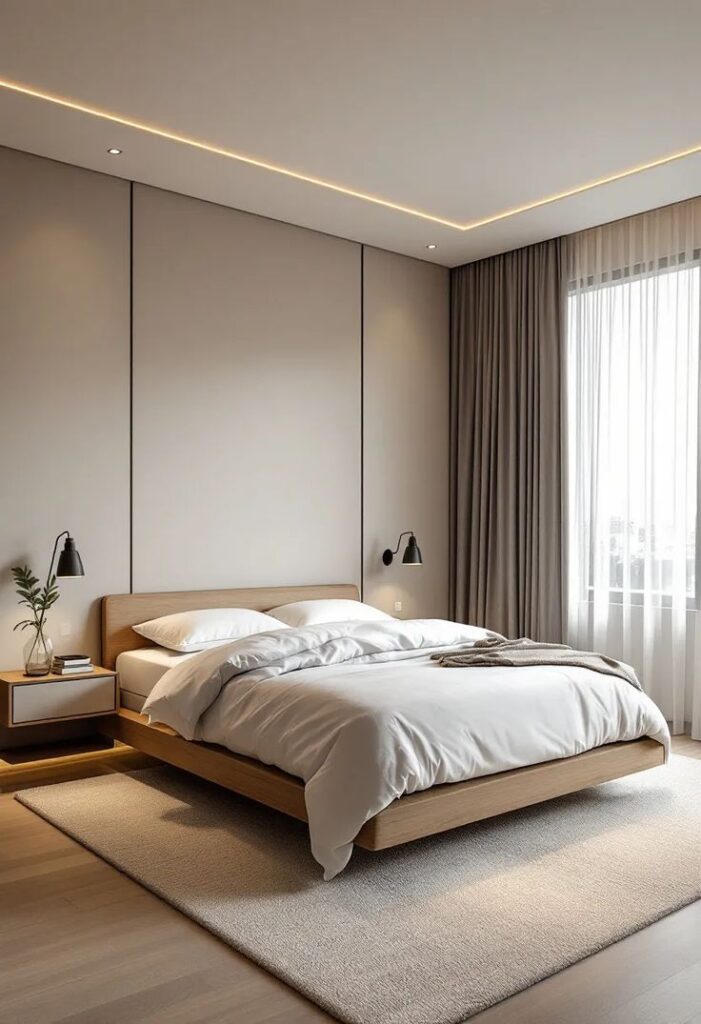
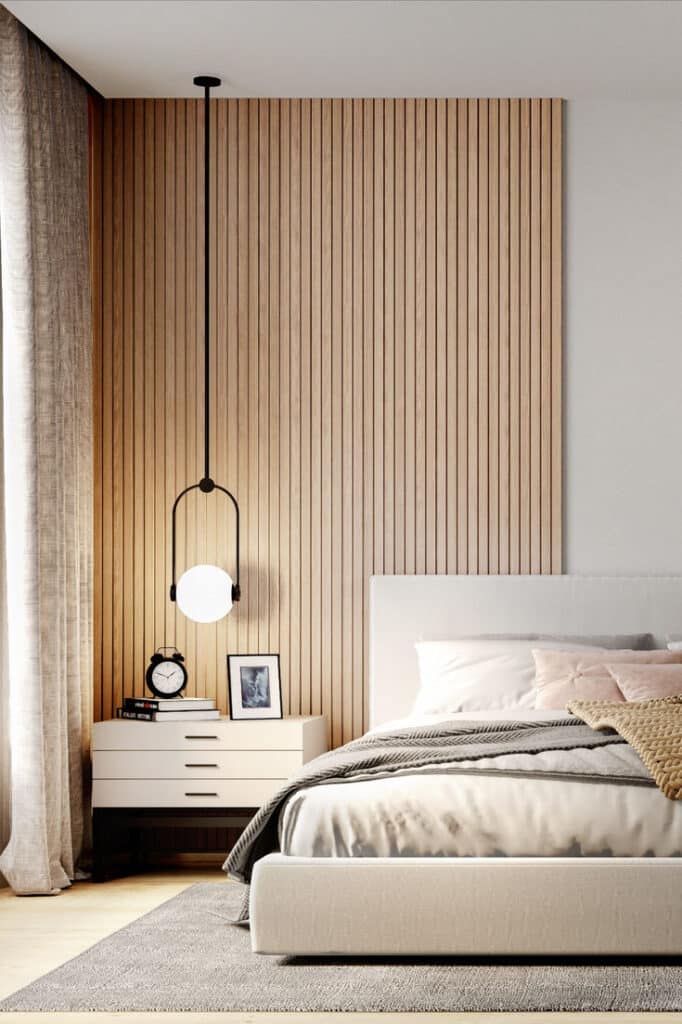
Ignoring Room Functionality
A bedroom is meant for rest, so the choice of Pantone colors should support this purpose. Using very bright or stimulating colors in a space meant for relaxation can reduce sleep quality.
Colors like soft blues, greens, or muted neutrals are better suited to bedrooms. It’s important to think about how lighting, furniture, and room use interact with paint colors to keep the environment comfortable and functional.
- 1.3Kshares
- Facebook0
- Pinterest1.3K
- Twitter0



